|
11/15/2020 0 Comments Making An Entranceby Ed Lee The Redfish World Series has arrived! Recognition by sporting industry peers, pundits, celebrities, and cohorts is the epitome of acknowledgement of purpose and is validation that something is real and permanent in that sport. Moreover, public recognition by a highly visible leading authority in the field is a crowning achievement and tells the world you have indeed - Arrived! That recognition, that respect, and that achievement has just come forward for the Redfish World Series World Championship. In a new book due to be published in mid-November the Redfish World Series is named as one of the top 60 fishing tournaments in North, Central, and South America. Fly Navarro, one of the most known, celebrated, and sought out anglers in the world has put together his first book – BEST CATCH 2020 - celebrating the winners of the 60 top fishing tournaments throughout the Americas—stretching from Canadian waters, throughout the United States, Central, and South America. The book is an heirloom style yearbook that belongs on every serious angler’s coffee table and in every fishing lodge in the world. “I’m passionate about fishing but I can’t attend every single tournament. There are still places I want to see, people I want to meet, and fish I want to catch. Together, these three things made me wonder if there’s a way we all could share our fish stories together.” - Robert “Fly” Navarro “The fishing tournament community is vast,” says author Navarro. “I wanted to create something that not only recognizes the tournaments and the winners, but also brings the fishing community closer. We might all be fishing for different species, but we share a strong passion for the sport.” There are three distinct categories in the book: Saltwater Offshore, Saltwater Inshore, and Freshwater. The book reveals the winners of the events and tells the story of the event, the history, and culture that rides along with each of these special tournaments. During the pre-printing phase of the book Navarro noted that the reception within the industry is a robust excitement. “People are loving it,” says Fly. “The top two comments I receive when people see the book are: 1) “This is beautiful!” They’re referring to the fantastic artwork of my friend Carey Chen. He is amazing. And, 2) “How do I become part of this book?” They want to be involved. I love it!” Praise for the book is already rolling in from some pretty high places:  “This book is a beautiful collection of stories about the people who truly love fishing. It’s proof that we all belong to a massive community of people who understand the magic beneath the water, and the best places to discover that magic.” – Carl Allen, owner, Walkers Cay 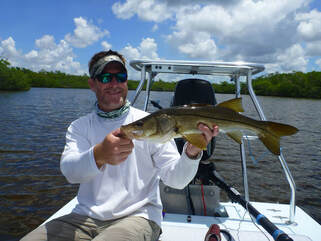 “Competitive fishing tournaments are a big part of our sport’s DNA. Chronicling this important part of recreational fishing is important and Fly Navarro has done a great job in capturing tournament fishing in this new book.” Jason Schratwieser, President, International Game Fish Association And, with this interview, I have had the pleasure of discovering that the Redfish World Series is the brainchild of a very interesting man named Gritter Griffin.
Griffin is not your everyday tournament director. In fact, nothing about him is “everyday”. During our interview I was seriously impressed with his depth and breadth of knowledge on every subject, but I was most impressed by his passion and drive to complete the mission he started two years ago. He is, in my opinion, one of those rare birds defined as a Renaissance Man. Griffin fished competitively on all the redfish circuits for over twenty years. He is one of the few “angling greybeards” that was there in the beginning. Along the way he developed a strong, abiding, passion for the sport and the species. “I just fell in love with it all. The anglers, the fish, the camaraderie, the competition and most importantly – the sport itself. I feel blessed from it all having made lifelong friends and industry contacts by being out there doing what I loved so much.” But it was not always to be slick water, bright sun, and bluebird days. Over the years, Griffin noted a troubling feature about his beloved sport. As time went on, the sport did not grow and thrive as he felt it should. Instead it seemed to devolve into a series of fits and starts and morphed into something unrecognizable as a cohesive competitive sport. "After twenty years of watching this happen", Griffin said, “I had seen enough and experienced enough to know that something very different and important had to happen if my dream of reality for redfishing was to happen – I had had enough of it the way it was. I just could not retire from competition and leave everything in the misguided, incomplete, and fragmented mess it was in. I was determined to change the pattern. So, I set out to build something so important, so different, so complete, so truly professional, that it would elevate redfishing to the level of professionalism it deserves.” And the Redfish World Series World Championship was born. Based in Chalmette, Louisiana, arguably the world capital of redfishing, the annual World Series serves as the crowning achievement for competitive redfish anglers. Only the top fifty redfish teams in the country receive an invitation to this prestigious event. It is exclusive. It is indeed special. Here, the world champion is crowned after a demanding and exhaustive four day stretch of intense competition. The unique format of the World Series was devised by Griffin to eliminate as much luck as possible while lauding and rewarding those that were fully developed, skillful anglers. He devised a format that forced the competitors to bring not only their “A” angling game, but their instincts, planning abilities, and analytical thinking abilities to the table as well. He said he built it that way because “The Redfish World Series Championship Crown will not be won accidentally!” After the initial success of the inaugural World Series in 2019 and then pulling off what he called the “Miracle in 2020”, Griffin has set out on part two of his plan to bring stability and recognition to his sport. He has built an entire national league of competitive redfishing events stretching along the coast from Jacksonville, Florida to the south Texas gulf coast – the National Redfish League. It is within this league that he plans to build his framework for the future. Here, he says, he will be able to expose, nurture, and grow interest in the sport from within the fishing industry as well as from non-endemic sources. One of the most important things he recognized about the first twenty years Griffin says, “…is that the events were being run for the wrong reason. They were being run for the people who were running them and not for the anglers and sponsors who were actually making them happen.” He is determined to change that too. He has built a 501(c)(3) company that is as different as his philosophy about competitive redfishing. “The mantra, mission statement, philosophy, and drive of this company is to recognize and reward the anglers and the sponsors that are making it happen.” “Anglers invited to the World Series should be treated as the celebrities they are,” Griffin said. “They should have a serious platform to market themselves to the fishing industry as ambassadors for a brand. And the sponsor partners that join us should be rewarded with effective marketing and exposure of their brand and their products. We are determined to do this right so there is recognition, fiscal responsibility, and value for a company to partner with us as we work to increase their visibility, marketing footprint, and overall viability.” So, I asked him (almost tongue in cheek) - will this work? His answer: “Absolutely and undeniably - Yes - it will work. It will work because we are unselfishly doing the right thing for the right people and we are also vigorously supporting coastal ecological and species conservation efforts as well as charitable organizations across the country.” The Redfish World Series has become legendary after only two years and, by inclusion in this new book, is now recognized by one of the industry’s greats as an important feature in the angling world. The National Redfish League is now poised to join in that recognition. redfishworldseries.com nationalredfishleague.com Pre-Ordering Now Available to Public!!! http://bestcatch2020.com/
0 Comments
"Coastal people stick together" By Pete Robbins When Gritter Griffin first conceived of the Redfish World Series, it was with one primary goal in mind: to elevate the sport of redfishing to a level of professionalism and the widespread respect of other major sports. Through two iterations of the main event, in 2019 and 2020, he is well on the way to making that happen. Griffin, however, does not think small. He could continue to push forward solely with his tournament operation, bringing anglers from all over the southeast US and Gulf of Mexico regions into St. Bernard Parish to compete for the sport’s most prestigious prize. No one would blame him if that’s what he did, but Griffin thinks his organization and his events need to embrace a broader purpose. And to that end he coined the phrase “Coastal People”. “We are all ‘coastal people,’ he said of the shrimpers, crabbers, recreational anglers and other resource users who ply the playing fields upon which the Redfish World Series takes place. “We share not only the same waters, but also the same sense of independence, self-sufficiency, drive, resilience, dedication and character.” It was a point that he made at the Captains Banquet which preceeded the 2020 World Series. “If some of us weren’t engaged in this kind of competition we would likely be competing against nature to make a living the same way they do. In fact, many of them are our neighbors and friends and family members.” Unlike other sports, tournament fishing takes place on public waterways. You can’t step onto the field and interfere with a kicker attempting a game-winning field goal. Nor can you plant a garden in center field during baseball’s World Series. In fishing, competing uses of the water and its resources are not just something to deal with, but also a factor that plays into tournament strategy – whether it’s fishing around someone’s duck blind or entering your primary area to find someone setting crab traps. While most recreational and tournament anglers are responsible stewards and politely share the water, in some cases they get a bad rap – especially those from out-of-town – even if they don’t do anything wrong. “The burden is on us to change that perception,” said World Series competitor Fred Myers. “We come in, run around and then leave. A lot of them are on the water 365 days a year. It’s important to extend a hand of friendship.” He said that Griffin’s speech “changed our focus” from just competing to serving as ambassadors of the sport, and it takes a highly-professional effort to provide that soapbox. “We’ve been waiting on something like this a long time,” Myers added. “None of the previous efforts panned out. But now we have a very, very big platform, and that gives us a chance to heal any disconnect between different groups. Our overall goal is to unite and ultimately protect the resource for all of us. That’s a game-changer.” Mike Frenette, named by Griffin in 2019 as the sport’s Redfish Ambassador and one of the greatest redfish guides and tournament competitors in the history of the sport, said he “wasn’t surprised” by Griffin’s plea. “I was pleased,” he said. “And I think it was taken to heart by every single person in the room. What’s important about that is that the anglers are from a number of different states, so everyone can take that message back to where they’re from.” Even Griffin, who had the highest of hopes when he gave his speech, didn’t expect it to impact his cohort so quickly, nor did he expect his anglers to take immediate action. Fortunately, he was surprised. Multiple competitors came to him to talk about how it led them to wave, smile, slow down and idle, or take other action to extend an olive branch to others on the water. Frenette said: “This isn’t NASCAR. We’re all competitive when we’re staging for take-off, but how much time do you really lose by slowing down? It’s a no-brainer.” Competitor Brent Juarez of Texas even went so far as to pay to fill up a family shrimper’s boat with gas at a station on the way to the water. “It’s not that we normally wouldn’t slow down and idle,” said Cole Starr, who is Juarez’s tournament partner. “But this time we were careful to go more out of our way. I noticed that it made everyone more at ease and friendlier to one another, no matter what they were doing.” Louisiana competitor Keary Melancon said that while there may have been a gap between different interest groups, it was artificial in nature and wholly unnecessary. “I’m from Grand Isle,” he said. “We charter fished. I worked on shrimp boats. I worked on crab boats. There are a couple of guys who do those things who fish the series. But to hear Gritter say it, it brought us together. You knew you weren’t doing it alone. It’s a more holistic approach to the sport and it’s having a positive impact. It’s long overdue.” Melancon admitted that there are limited acres of prime water, and limited numbers of hours in the day, so while it’s not an impossible battle, it’s one that will take more than just a few good deeds to achieve something closer to harmony. Nevertheless, he’s optimistic that greater understanding is not that far away. “We’re turning the tide,” he said. “The Parish representatives were present for the Captains Meeting. It would not be a bad idea for us to have some representation from the commercial side, too. I love what Gritter’s doing, and I’d like for them to be able to see how much we have in common. Personally, I have not killed a redfish on purpose in at least three years. I tournament fish. I don’t fish to cook and clean fish.” Griffin recognizes that one speech won’t solve any disconnect, nor will it keep the good will and good deeds flowing, but he’s in it for the long-term. “The whole point of this was to begin a healing process,” he said. “To extend the hand of friendship and camaraderie to our cousins on the water. We need to celebrate them. It’s not bragging if you did something good, but we need to grow and maintain a process of change if we’re going to establish a legacy far into the future.” “We’re all from the same blood,” Frenette concluded. “We just do different things. If we can get more people to think that way, we’ll get more respect ourselves. Everybody that works on the water, no matter what they do, has a tough life. It’s a harsh life. But we’re all out there doing what we love to do, enjoying the freedom that comes with being on the water.” Louisiana team overcomes tough conditions with tide-based strategy By Pete Robbins [Chalmette], La. (October 03, 2020) – In the second annual Redfish World Series, the Louisiana team of Sean O’Connell and Eddie Adams made sure that the title stayed close to home in St. Bernard Parish, and in doing so kept their batting average at one thousand. Based on an impressive catch of a tournament-maximum fourteen fish for 110.59 pounds, they dominated the 50-boat field to repeat their 2019 title and maintain their status as the only anglers who’ve won this prestigious crown. “Both times it was equally special,” said Adams, who is a full-time Louisiana redfish guide. “As a guide, COVID has made this a tough year. I missed two full months of work in April in May. But just as importantly, even though we fished at the same time of year and in the same place, the way we fished was totally different last year and this year.” Practice and Strategy Although some teams came down weeks in advance to scout out the available tournament waters, the region was battered by storms in the days leading up to the tournament, which made practice difficult if not impossible. Even those anglers who were able to get out were not certain that what they’d found would hold up. Both members of the winning team attributed a large part of their success to teamwork and complementary fishing styles. “Eddie is a brilliant angler,” said O’Connell, who is a Physician Assistant. “But I’ve also had a lot of success in a lot of different trails. We fish differently. He’s hard-nosed and fast on the trolling motor. I tend to be a slower fisherman. We’ve found a meeting point – he can speed me up, and I can pull the reins back when he needs to slow down.” Even their mechanics work well together. Adams is left-handed and O’Connell is right-handed, so they know when the other is best-suited to make the money cast. Because they had extensive prior knowledge of the fishery, the pair continued to “practice” well into the tournament, watching changing conditions and adjusting accordingly. “We started close to try to get some fish in the boat,” Adams said. “The weather was still nasty and windy, with real high water. We scouted the whole day because we hadn’t been able to look around before. We knew that with the tide falling the pockets would clean up and it would be a late bite, so we could run further then. We weren’t losing much by staying close early. It wasn’t a gamble. The difference between winning and losing was all about decisions.” Competition Days Even with many areas dirtier than usual, Adams and O’Connell committed to sight fishing, but a large part of their strategy depends on complementary tactics and skill sets. “Eddie got a lot of his tournament techniques from Texas, where they like to throw big, big jig heads with swimbaits and crash cast them. I’m more of a finesse fisherman.” Accordingly, while Adams chunked a Berkley Gulp Swimming Mullet in black/chartreuse, root beer/chartreuse or glow/chartreuse, O’Connell was able to ply the thicker grass with a PowerBait Chigger Craw fished on a Berkley Fusion twist-lock hook with a small tungsten weight. They knew that the key would be to catch at least a 7 pound average per fish, but that wouldn’t be easy under the changing conditions. The task is also complicated by the unique format of the Redfish World Series, where teams are able to weigh in two redfish on Day One, three on Day Two, four on Day Three, and five on Day Four. It requires not only an ability to find those high-grade keepers, but also to manage them properly. A fish caught the prior day may not bite again, so teams have to know when to lay off their primary areas. Fortunately for Adams and O’Connell, they started off on track with a 15.82 pound catch on Day One. That had them in 10th place, but well within range given the increased bag limits on subsequent days. The next day they added three fish for 25.42, an average of well over 8 pounds per fish, and grabbed a lead they’d never relinquish. Despite their solid performances those two days, it was on Day Three that they really made a power move, slapping four monsters totaling 35.36 on the tournament scales. That’s an average of almost 9 pounds apiece. “Those included two of the biggest slot fish I’ve ever happened to catch in a tournament,” O’Connell said. “One 9 ¾ and another close to 10. That gave us a 6-pound lead going into the final day. We’d been careful not to exhaust our fish, hitting a lot of areas where we could catch one or two, We still knew that in order to win we’d have to execute on the fish we had.” Indeed, with 33.99 on the last day, they maintained that lead, but it wasn’t a walk in the park. “I thought we’d have 38 pounds, easy,” Adams said, “But those fish vacated. I thought it would be easy and it ended up being stressful. We left the door open.” Nevertheless, they’d built what ended up being an insurmountable lead, and claimed the top prize for the second straight year. Conclusion While both Adams and O’Connell are happy to fish close to home, and rightfully proud of their two trophies, they reject the idea that their “home field” gives them an insurmountable advantage. “You never go into a tournament thinking that you are going to lose,” O’Connell said. “But I love that the field consists of the best of the best, the people who have done so well in their respective divisions It’s an honor to be invited and it was something special to win again, especially with the increased size of the field.” He noted that last year’s runners-up were from the Carolinas. Just as importantly, St. Bernard Parish is properly known as The Redfish Capital of the World, precisely “because the fish are so catchable,” Adams explained. “Every time, it’s still anybody’s ballgame.” So will there be a “threepeat”? “I haven’t had a chance to think about it yet,” said O’Connell, who quickly went back to the full-time job in the operating room after claiming the title. “But if it did, that would be absolutely amazing.” NOTES
by Pete Robbins
Gritter Griffin is not a man who thinks small or acts slowly. He’s a serial entrepreneur with an M.D., and a mind that spins at warp speed. With that as a backdrop, it should surprise no one that his attempts to unify and elevate competitive redfishing are grander than anyone thought possible – and they’re happening faster than even he envisioned. The next step will be this month’s second annual Redfish World Series in St. Bernard Parish, Louisiana, where 50 two-person teams of the world’s best inshore anglers will compete for bragging rights and a big payout over the course of four days on the water. “Several other organizations have tried to take a stab at a competitive redfish circuit, but they’ve never made it what I would call a professional sport,” Griffin explained. “Up until a year ago, it was completely disjointed and fragmented. Everyone was doing their own thing with no mission statement or central direction.” That changed with the first Redfish World Series last year. Unlike typical one- or two-day events, the four day format, with teams able to bring in two, three, four and five fish on consecutive days, added an increased element of strategy. Teams had to figure out how far to run, when to lay off their fish, and how weather conditions would affect their catch. That resulted in substantial flip flops in the standings each day, thrilling fans and keeping anglers on their toes. “Last year turned out spectacularly,” Griffin said. “It felt like a kiss of destiny.” That destiny was bolstered by the tremendous and ongoing support of the government and businesses of St. Bernard Parish, entities who see this effort as a means to help the angling public understand why their locale should be considered the "Redfish Capital of the World". “You can launch your boat from any marina here and target redfish, speckled trout, red snapper, grouper, tuna, or wahoo all from that same place,” Griffin explained. “It’s in the center of everything. St. Bernard is truly the doorway to the greatest multi-species fishing experience on earth.” While competitors can run as far as they want during the designated tournament hours, he predicts that the winners will catch their fish close to where they launch. That doesn’t mean it will be easy. Between the recent hurricane and this week’s 8 to 10 foot tidal surge, things are changing by the hour. There is a ton of bait up in nearby areas, but the fish that are here today can move overnight. “You’d better have Plans B, C and D.” The only history that most of the anglers have to rely upon is last year’s 7.25 pound average fish for the winning team. With that experience to rely upon, returning teams may be in a position to improve upon that standard. But, constantly changing conditions may make a consistent run difficult. No matter what, one team will take away the top prize. What Griffin can control, however, is the grandeur that goes along with the event. Because of St. Bernard Parish’s extreme willingness to provide whatever it takes in terms of equipment, logistics, and manpower, he is confident that this year’s event will be bigger and better than last year’s high bar. “They’ve caught my vision,” he said. “They have supported everything we’ve asked for and envisioned. Last year we held a banquet that was like an Academy Awards presentation. We filled up an entire auditorium, we ushered everyone to their seats at tables covered with white tablecloths. I’m well aware that the banquet is the public-facing event that will be the face of the Redfish World Series for the future.” Another aspect that captures the event’s quick rise is the payout, which this year will total $290,000, almost twice the entry fees put in by the anglers. Griffin has vowed that the “mason jar” mentality that has governed redfish events in the past will never exist in his circuit, and that “the minimum payback for any tournament I ever put on is 100 percent.” The speed with which this event has reached his five-year goals has amazed even the ever-optimistic Griffin, and it has accelerated his other plans to bring professional redfish angling up to par with other professional athletic and competitive endeavors. He’s established the organization as a 501(C)(3) and next year plans to officially launch the National Redfish League – with four divisions and a total of 16 events. “My goal has always been to change an entire sport and create an industry out of it,” he concluded. “We’re on the cusp of that, and we’re there way faster than I expected.” by Ed Lee Every now and then in the world of competitive sports an event is created that captures the imagination of its participants and fans so resolutely that it becomes an instant mainstay of the sport. And, so it was with the first Redfish World Championship – the Redfish World Series. The maiden voyage of the RWS began in 2019 and it was an instant triumph for the anglers, the fans, the sponsors, and the sport itself. With the first Redfish World Championship the competitive redfishing world was changed forever. The RWS did not rest on their laurels though. The owners quickly expanded from a tiny LLC with a single event to a company conceived, designed, and built to achieve the lofty goal of uniting what has historically been a fragmented, undisciplined, and disjointed sport. With multiple tours, trails, and events and without leadership, cohesive management, or mission statement competitive redfishing has languished in relative obscurity for over 20 years. In just one year the RWS has become a charity-supporting 501(c)(3) organization, installed a Board of Directors, created a fair and equitable national ranking system for the anglers, and fashioned a National Redfish League to promote the organization, building, and maintenance of a cohesive and unified sport. The RWS and NRL are now on pace to revolutionize and legitimize competitive redfishing. The entire organization is based on the belief that In order to grow, prosper, and attain longevity and success, a sport must have a strong central organization to generate and oversee the rules, management, and promotion of that sport. This is the premise that will forge a solid and consistent base for both endemic and non-endemic sponsors and partners. But nothing of the magnitude and importance of the RWS happens unaided. Endemic partners are a necessary ingredient for success and some of the big names in the industry immediately saw the value and supported the inaugural event. One of those big names is Mercury Marine. From the beginning Mercury has been a major partner with the RWS. As a leader in the marine outboard engine industry, Mercury has always supported significant events in the world of competitive angling. It was no different with the RWS. They recognized the importance of the mission behind the RWS and lent their support and name to the endeavor. It worked. In fact, the event far exceeded everyone’s expectations and has now become the most sought after and coveted invitation in the history of competitive redfishing. After over twenty years as a disorganized, broken, and amateurish sport, competitive redfishing has been transformed and legitimized. We are now witness to the birth of a genuine professional sport and industry rising from the ashes of poor beginnings. This is now a sport that will continue to grow and flourish thereby providing anglers, fans, and industry alike with enjoyment, opportunity, and the promise of an important and rewarding future. 8/2/2020 0 Comments Redfish world series field setCONGRATULATIONS to the teams of the 2020 Redfish World Series!! These are the teams that have made it to the upper echelons of competitive redfishing and will vie for the title of WORLD CHAMPION in the toughest and most grueling format ever designed - September 24-27, 2020. (The teams are listed below in the randomly generated boat order that will identify them throughout the RWS.) 1. Hank Edwards Ian Mathews 2. Jeremy Heimes Mickey Gibbs 3. Jimmy Adams Angela Adams 4. Danny Payne Jake Haynes 5. Bo Favre Justin Ladner 6. Chuck McKinney Tony Gagliano 7. Josh Galt John Panepinto 8. Lawrence Sanchez Bill Coleman 9. Bobby Weir Matt Schoen 10. Chandler Altman Joe Wortham 11. Josh Hall Mitchell Chevalier 12. Sam Roberts Chase Daniel 13. Ken Mullet Steven Howie 14. Joey Romero Jesse Romero 15. Austin Angel Lance Reynolds 16. Mike Frenette Michael Frenette 17. Cole Starr Brent Juarez 18. Gus Wilson Gary Wilson 19. Copeland More Michael Rogal 20. Jason Dail Allen Jernigan 21. Todd McKellar Bart Crader 22. Rennie Clark A shley Lowder 23. Mike Tindal Artie Price 24. Larry Rowell Justin Lowry 25. Derek Engle Eric Henson 26. Patrick Tabor Jason Geigenmiller 27. Paul Braly Bartt Caron 28. Justin Ownby Patrick Marsonek 29. Garret Lacy Zachary Mahosky 30. Casey Brunning Ty Hibbs 31. Shane Pescay Nicky Savoie 32. Matt Stennett Chris Evans 33. Kevin Harvey Kelly Dupre 34. James Alexander Monica Alexander 35. Jeff Rogers Luke Landry 36. Charlie Barton Cody Barton 37. Paul Dufrene Travis Land 38. Eddie Adams Sean O’Connell (2019 Champions) 39. Mason Lincoln Melissa Lincoln 40. Jimmy Pausche Scott O’Brien 41. Mike Taylor John Roberts 42. Kristopher Roberts Fred Peterman 43. Freddy Frederick Trey Fournier 44. Fred Myers Britt Ordes 45. Michael Cowart Mark Cowart 46. Kevin Akin Jimmy Lloyd 47. Ronnie Pitts Chris Rosengarten 48. Chris Calhoun Brandon Modisette 49. Derek Taylor Brian Goude 50. Chance Angel Kevin Roberts 2/23/2020 20 Comments national redfish leagueFor Immediate Release
February 23, 2020 If you love the sport of competitive redfishing. If you have ever dreamed of a solid, unified sport and industry. If you have ever dreamed of a centralized organizational structure to support the growth of the sport and industry. If you have ever dreamed of consistent rules, formats, and payouts. If you have ever dreamed of competing on a level playing field where your skills and strategy determine your results. If you have dreamed the dream of genuine professionalism in every aspect of our sport…….. Then dream no more – because the dream is now a reality! Let me introduce you to the National Redfish League (NRL). The NRL is a non-profit 501c3 organization designed to build, grow, and maintain the sport of competitive redfishing. The NRL has been created for a specific purpose: to build an infrastructure expressly for the unification and solidarity of competitive redfish events. The supervision, management, and operations of the NRL and its entire structure are under the direct control of its Board of Directors. This Board is tasked with designing and developing a strategic national configuration for competitive redfishing events. A structure that is based on honesty, integrity, fair play, and professionalism in all matters. A structure with the sole purpose of building, promoting, and advancing the sport of competitive redfishing on a national level. A structure that will legitimize our sport and the industry leaders that support it. This unified aspect of our beloved sport of competitive redfishing has, for too long, been absent and without it we can never have the value, the permanence, the respect, or the status this sport deserves. The NRL is dedicated to the principles of equality, fair play, honor, and integrity of the participants, the events, and the overall management of the sport of competitive redfishing. We also ardently support our designated charitable organizations and encourage the protection of our natural resources. With dedication, time, and a lot of hard work the NRL will build a framework within which every event in every division will utilize the same rules, formats, methods of measurement, weighing, payback structure, and production thereby creating a truly level playing field for competitive redfish anglers across the country. For the first time in the history of our sport there will be a unity, a harmony, a purpose, and a team spirit that has heretofore been so woefully absent. The NRL is comprised of Five Divisions, Two Open Events, and a Grand Finale. Each Division will hold four events annually with each event eligible for points in the RWS ranking system. The two Open events will be designated as an Eastern Open and a Western Open and will be held in different locations annually to allow as many competitors as possible to have the opportunity to immediately qualify for the RWS in the same year. The Redfish World Series is, of course, the Grand Finale to every year and is where the World Champions are crowned. The current structure of the NRL is as follows: Five Divisions:
Two Open Events:
The Grand Finale:
Each Division will have a Manager that also sits on the NRL Board of Directors. The current Managers of each division are as follows:
These divisions are designed to include the entire coastline from North Carolina to Texas giving every redfish competitor an opportunity to participate in the National Redfish League and qualify for the Redfish World Series. As we grow and the need arises, we are fully prepared to make necessary changes in the initial structure with additions of new events and personnel in each division as needed to produce a comprehensive national coverage of competitive redfish events. Over the next several months the NRL Board will be meeting to solidify the rules, formats, production, etc for the inaugural NRL season in 2021. Everything you have ever dreamed possible for this sport is about to happen. Join us and be a part of history as we change the face of the competitive redfishing world forever. The future begins here. The future begins now. GG 2/16/2020 2 Comments building a legacyby Gritter Griffin
The Three Pillars – The Redfish World Series and all its components is specifically created to:
I have said it before, and I’ll say it here again – I want to change this sport and this industry for the better. I have a dream of a true professional level sport with a robust and vigorous endemic and non-endemic industry following. This inaugural event was all about the creation of a new level of competition and exposure that establishes a marketplace for anglers and industry alike to promote their skills and products respectively to a growing fan base. June-September 2019: Anxiety, stress, angst, apprehension, unease, worry, anguish, fear and more; so much more. These emotions, feelings, and – yes – fears, dominated my world for several months in 2019 as I raced headlong into the abyss of the unknown. I had tasked myself with producing an unprecedented event – the Redfish World Series. And then, to further complicate the matter, I added a Pageant, a Festival, and a Banquet to the to-do list. I had, by wanting to build something very special, created a quagmire of entangled complications that I wasn’t at all certain how to navigate. But I was determined to do so. I am a man that generally fears little and takes on much with the confidence that if I don’t know what to do or how to do it I can figure it out pretty quickly. That was the case in 2019 – in spades! I wasn’t too terribly concerned about the tournament itself. I have competed in so many venues over so many years that I knew, if I could obtain the right equipment and a few key personnel, the tournament would run well. But I wanted more then “well”. I wanted perfect. Actually, I wanted unique, special, spectacular, AND perfect. I knew that I had come up with a unique format. And I knew I had come up with a special field of competitors. But there needed to be more. There needed to be a distinctive way to stage the event and to present the event to the competitors. I had to find a way to celebrate the accomplishments of the anglers and then present them to the world so they could be seen and celebrated as the first-class group they are. The Celebration Banquet The Banquet was designed to showcase and honor the participating anglers as well as the sponsors of the event. In my mind this part of the event was the actual face of the World Series. It would be here, within the confines of this two-hour show, that everyone would get a glimpse of the class and pageantry inherent in a world class event. It would be here that they could see, hear, and experience the overall vision for the future of the Redfish World Series and for competitive redfishing. I wanted the sponsors to be able to meet and greet the anglers and vice versa. I wanted to showcase the people of the parish and expose St. Bernard parish as the redfish capital of the world. I wanted to produce a one-of-a-kind, first class, banquet event as an example to the rest of the angling community and the entire industry that competitive redfishing is legitimate and that this arena can be a valuable component of a company’s marketing arsenal. It worked. This small part of the entire World Series became the centerpiece, the stand-alone success, that it was designed to be. Never again will it be acceptable to have a production of anything less. Never again will the top anglers in this sport be taken for granted. Never again will the competitive redfish industry be the same. The big screen bump tank. This innovation has been in my mind for a long time and it is long overdue. The setup is simple enough. A live feed camera structurally mounted directly over the measuring board with the live video stream going to a big screen monitor(s). Yes, the setup was simple, but the results were dramatic. No longer did anglers at the bump tank or waiting in line wonder about what was going on at the bump station. No longer were there rumors of special treatment or letting a fish that was fractionally over the line “slide” on through. No longer was there any mystery about a fish being qualified because everyone got to see the actual measuring event taking place in real time. Total transparency! Simple? Yes. Innovative? Yes. Overdue? Absolutely. Extra Gasoline Tanks If the Coast Guard doesn’t have a problem with it, why should I? Who cares how far anglers run to find those perfect fish. There is inherent risk in that proposition and if it’s a strategy and risk undertaken to win a World Championship then so be it – well played I say. Floating creel limits. This is just another idea that is long overdue. In every event I have ever fished the rules state that we must adhere to all local, state, and federal laws. Then there’s another rule that says anglers can only possess the “weigh-in creel limit” on their boat at any time during the day. That has always seemed strange to me. If the state law says five fish per angler can be on the boat at any given time, then I don’t see anything wrong with holding up to that many. As long as there is the capacity to keep the fish healthy then I see no reason that anglers cannot carry up to the legal limit of fish onboard their boat. It is simply another strategic risk because if a fish dies it cannot be culled. Oh yes, the tournament rules certainly dictate the daily creel limit that can be brought to the dock for the weigh-in. But it makes much more sense, particularly from a competitive viewpoint, to “take some of these fish for ride” while continuing to flesh out the tournament strategy for that day. No laws broken. No fish damaged. Resources intact. Conservationists win. Anglers win. Competitive redfishing wins. Four-day competition and Progressive Bag Limit Nearly every redfish competition is based on a one-day or two-day event strategy with a fixed bag limit. This is necessary due to the very nature of the events and the competitors involved. But the World Series needed to be different. Because the World Series is the sole entity that develops, exposes, and celebrates a true Redfish World Champion it must be different. It must be unique. It must be more rigorous. It must be a test of both skill and strategy. And, most importantly, it must showcase honor, integrity, and respect on the playing field. These aspects are an integral component not only for the competitors and the event but for the environment, the local fishery, the local population, and the industry itself. I wanted to create a competition that would be unique and extraordinary in every way. A format that would test the mettle, the intellect, the skill, the grit, and the fortitude of the best anglers in the world. A format that would encompass a four-day journey of the most rigorous test imaginable. A journey that would replace luck and happenstance with skill and strategy. And it worked! The four-day format along with the progressive bag limit created exactly the situation I was hoping to achieve. Nothing came easy. Nothing was a given. Strategy and skill, not luck, ruled the day. Drive by weigh in with live video wall. The creation of the Louisiana Redfish Festival with live bands, food vendors, carnival rides, midway, and festive atmosphere was specifically designed as a support structure for the Redfish World Series. The Top 12 – Gold Division – was given a police escort on Day 3 & Day 4 to the festival where the anglers were driven in their boats to stage front and center to weigh their catch for that day. This drive by weigh in was utilized as a means to expose the top anglers and their sponsors to the local crowd and nationally via a live feed video circuit that let fans tune in on Facebook and YouTube. Additionally, a 10x20 foot live-feed video wall elevated at 24 feet high adjacent to the stage allowed all festival patrons and fans to see the action onstage as it unfolded during the final weigh-in. Create positive change in competitive redfishing nationally. One of the three structural pillars supporting the concept, formation, and structure of the Redfish World Series is to create and promote positive change in competitive redfishing participation and management. By all accounts this pillar was a resounding success. Every redfish tour and event experienced an increase in participation in 2019 on a national level. The buzz in the redfish angling community has been nonstop since the inaugural event was unveiled. The chat rooms and social media are replete with the excitement of the first Redfish World Series and the anticipation of the upcoming event in 2020. Boat ramps, docks, taverns, restaurants, and everywhere anglers gather there is talk of redfish competition and the World Series. Yes, the 2019 Redfish World Series was, by all accounts, a resounding success. For that, I am relieved and grateful beyond measure. I am indebted to the sponsors, the fans, the volunteers, the parish, and most of all, to the anglers who comported themselves in the most professional manner ever seen in this sport. Yes, I am grateful. I am happy. But I am not yet satisfied because I am driven to make it all bigger and better than ever before - 2020 is here! 10/29/2019 0 Comments MIke the Fish GuyToday was one of those special days, a day I was truly honored to be a part of.........
Let’s take it back several years ago. At least 35 years ago when I met Dr. Bart Farris, an icon in the medical field especially at West Jefferson Hospital, who gives an enormous amount of his time to many, many different organizations and sits on many boards. More importantly, he is just a great guy and it's my honor to have a friend such as him. But here’s the kicker, his passion is fishing. We have spent many days fishing together for many years chasing just about everything that swims in the Northern part of the Gulf. From giant Tuna, huge Wahoo, Amberjacks, Giant Snappers , several other species and of course Redfish especially sight casting (which might be his favorite). Get the picture? He really loves fishing but here is the cool part about Bart, he is a great father who has raised two awesome children, one boy one girl. Several years ago when they were young I had the privilege to fish with both Sarah and Daniel and through the years watched them grow into two great adults with professional careers. Daniel, an attorney in Chicago, has two young boys, Charley 6 and Tom 8. So Bart calls me a couple of months ago and said that Daniel was coming to visit and was bringing the two boys and of course the question came up “Well Mike what do you think about taking the boys fishing?” So I said “Of course we should take em!" ”Remember, Mike, they are only 6 and 8” Bart said. “So?” I answered and it was set up. Last night I talked to Bart and we decided we were just going to keep the day simple......No crank baits, spinner baits. top water, popping corks. Just plain ole simple fun fishing to get these boys into fishing! Well about 7:45 this morning they pulled up to the lodge and here comes two little studs jumping out of the truck running straight to me and in a loud voice scream out “Hey it’s Mike the Fish Guy”.......Well I about rolled over laughing. For those of you that know me I Do Not Fish with BAIT......but today was an exception because it didn’t matter what we caught. Stingrays, Catfish, you name it just tug on the line, so yes I brought some dead shrimp along and if you ever ask me I’ll deny it......but here’s the deal, when it comes to the pups it’s just so important to get them on the water and hopefully catch a fish. Well we get to the spot and the first two bites were good ole hard head catfish that we all hate. Not these two boys. You would have thought they had just caught two world record Marlins. It gets even better. They learned how to cast and handle the spinning rods like little pros.......Next bite the drags are screaming and so are they......”Got a monster” one of them yells and the other says “ Yeah me too and mines bigger”. I’m laughing as these are 6 and 8 year olds and as competitive as adults.......Well we got into a school of huge black drum (accidentally) and it was GAME ON!!! for a solid couple of hours. Now what’s really funny I don’t know how many times I heard “Hey Mike the fish Guy” please measure my fish cause I know it’s bigger than my brothers......Dad and Pop Pop kept saying it’s Capt. Mike but they insisted it’s Mike the Fish Guy. Thanks Bart and Daniel for allowing me to be a part of a very special day full of lifetime memories️ I know it’s not practical but I wish that every young child would have the opportunity to go fishing. It doesn’t have to be on a boat, just take em! The memories are priceless!!!!! For them and for you! And, most importantly, they are the future of our sport and this industry. 8/15/2019 0 Comments a mad race indeedby Gritter Griffin
The competitive redfish season is winding down and the race to qualify for the 2020 Redfish World Series is reaching a boiling point! Two of the tours are complete (Power Pole & Rudy’s) and the ten qualifiers from those tours are set. But, across the rest of the country, the redfish competition is in a state of chaos. Most especially the IFA. On no other tour is the action as hot and the scramble as intense as it is on the IFA circuit! There is a total of EIGHTY TEAMS with a chance to make it to the Top Seven in the RWS final rankings for the IFA because any team with a single point – and that’s a total of 80 teams – has the potential to jump up in the rankings with a win or high finish in the IFA Championship in Venice, LA October 18-19. Currently, the IFA team of Danny Sheldon and Kyle Craven seem to be safe with their dominance of the IFA circuit. They have a 34-point total with an 18-point advantage over second place. Hank Edwards and Ian Mathews are in pretty good shape as well holding on to the second spot with 16 points. Mason and Melissa Lincoln are all alone in third with 14 points, but they have nine teams right behind them in the 4th position with 10 points. Then there are Thirty-Nine more teams holding down the 5th – 9th spots in the current standings. The IFA Championship will surely tell the tale for the mad scramble to the Top Seven IFA spots that will receive the 2020 RWS invitations. Over on the Elite Redfish Series there are currently 35 teams vying for the Top 8 spots in the RWS rankings. Paul Dufrene and Travis Land are currently in first place in the RWS rankings with 14 points followed by Jeff Rogers and Luke Landry with 12 points. Nicky Savoie and Shane Pescayare holding on to third with 11 points followed by five teams tied at 10 points. But none of the Elite Series teams are safe yet since there are two more events to go before that series is complete. SO, it is likely that the Port Lavaca Event and the Elite Redfish Series Championship at South Padre Island on October 4-6 will be major deciding factors in the final RWS rankings for the Elite. The Saltwater Angler Redfish Series has one event to go and the top spots are packed tightly here as well. Mike Maule and James Alexander are holding on to the number one spot with 12 points followed by Mason and Melissa Lincoln in second with 8 points. Chuck McKinney and Tony Gagliano are in third with 7 followed by Patrick Tabor and Jason Geigenmiller rounding out the top four. It’s anyone’s game on this new tour and the last leg of this three series trail will determine the Top Three teams that earn the RWS 2020 invitation. But wait, there’s more! The Southern Redfish Cup is a three-event trail that kicks off September 7th in Georgetown, SC and wraps up on December 7th in Port Royal, SC. The Top Four from this tour will earn invitations to the 2020 RWS and it is likely that this tour will be also utilized by some of the bubble teams as they try to earn their way in via the RWS Wild Card rankings which require points from more than one tour. The success and validity of the RWS National Ranking System, with a few tweaks yet to come for 2020, appears to be working exactly as planned and the future of competitive redfishing looks brighter than ever. 8/15/2019 0 Comments going viralby Gritter Griffin
The Redfish World Series tournament and Redfish Festival have grown exponentially since their inception just a few months ago. I had hoped that we could just have a nice tournament. I had hoped that we could find a way to host it in such a way that the participating anglers would be treated like the celebrities they are. I had hoped that we could find local support and assistance with the events. I had hoped that the anglers would embrace the idea. Now, all that and so much more has come to pass with the support and notoriety growing daily. The St Bernard parish government has been nothing short of extraordinary in their support of the events. Without their excitement and belief in what we are building we could not, and would not, be where we are today. It is important to me that we recognize the hard work, dedication, and skill that goes into becoming one of the top performing teams in the country. I have been out there competing for over 20 years and the fatigue, the heartbreak, the expense, the time away from home, the long days on strange waters – all are still pretty fresh in my mind. Dedication should be rewarded. Passion should be recognized. Skill should be celebrated. And, we are going to just that! The Captains’ Banquet is going to be the initial thrust in the campaign to make the competing anglers feel special. The entire civic center auditorium will be decorated like a ballroom. White linen tablecloths, gold chairs, designated seating, a catered meal with servers, open bar, and attendance by high profile political figures as well as the sponsors of the RWS will make this a very special event in itself. The finale will be nothing short of spectacular. On the main festival stage on Sunday afternoon, when the first ever World Champions are announced, the celebration that is planned will be absolutely stunning! I am hoping the anglers that are not in the Gold Division will stick around to see it all happen and celebrate the championship with their competitors, fans, families, and festival crowd. The buzz surrounding the first RWS is making its way throughout the industry. More and more companies are hearing about the tournament and calls are already coming in regarding sponsorship in 2020. And, I believe after the first one is documented and circulated across various media platforms, the interest will be even higher. 8/5/2019 0 Comments One REdfish at a timeGenesis Garrett, 11, releases one of 300 adult redfish donated to red tide recovery efforts by Duke Energy's Crystal River Mariculture Center by Jessica Wells Eleven-year-old Genesis Garrett has been fishing for redfish in the Gulf of Mexico since she was a toddler, but on this day, instead of taking fish from the water, she put one in. Genesis and her dad, Zachary Garrett, joined Duke Energy and Coastal Conservation Association Florida at Brasher Park in Port Richey, Florida, to release 25 adult and 2,000 juvenile redfish. Genesis Garrett, 11, releases one of 300 adult redfish donated to red tide recovery efforts by Duke Energy's Crystal River Mariculture Center.Genesis smiled as she shuffled a release bag and a 2-foot-long redfish into the Gulf. Her fish was one of about 300 adults and 16,000 juvenile redfish that Eric Latimer and his team raised at Duke Energy’s Crystal River Mariculture Center. Their goal is to help replenish the redfish population after one of the most devastating red tide blooms in Florida history. Red tide is a naturally occurring bloom of dinoflagellate (algae) that typically lasts a few days or months in late summer to early fall. The most recent bloom began in October 2017 and lingered until early 2019, the longest since 2006. It killed hundreds of tons of manatees, sea turtles, fish and other marine life. Eric Latimer and his team raised 16,000 juvenile redfish and 300 adults, like this one, that are six to seven years old Eric Latimer and his team raised 16,000 juvenile redfish and 300 adults, like this one, that are six to seven years old.It affected not only wildlife but an economy that relies on tourists who visit southwest Florida to fish. At the height of the bloom, Florida Fish and Wildlife Commission issued a mandatory catch-and-release order that extends to May 2019 in several counties to help protect two of the state’s most popular sportfish: snook and redfish. Latimer, who manages the mariculture center, was watching this on the news last summer when he had an idea. He knew he had plenty of healthy redfish, so he called Brian Gorski, the executive director of Florida’s Coastal Conservation Association, and pitched his idea to partner on a release when the water was safe. Gorski was immediately interested. “I said, ‘Heck yeah, what do I need to do?’” While Latimer and his team raised thousands of redfish and received permits from Florida Fish and Wildlife Commission, Gorski and the Coastal Conservation Association arranged release events in eight counties hit hardest by red tide: Charlotte, Collier, Hillsborough, Lee, Manatee, Pasco, Pinellas and Sarasota. Eric Latimer looks on as Brian Gorski shows spectators what the juvenile redfish look like before they're released into the Gulf of Mexico Eric Latimer looks on as Brian Gorski shows spectators what the juvenile redfish look like before they're released into the Gulf of Mexico.The first release was in Pasco County on Feb. 5 and the last, March 19 in Charlotte County. They chose locations, like Brasher Park, that were lined with mangroves and other hiding places, so the 4-to-6-inch fish could avoid predators and increase their chances of survival. The adults, like the one Genesis released, were much bigger at 6 to 7 years old. They are anywhere from 20 to 32 inches long and weigh between 3 and 8 pounds. Each was released by hand and tagged so that anglers who catch the fish can call the number on the tag and report where they caught the fish and its details so researchers can record how the fish are doing. Gorski said they’ve been asked if 16,000 redfish will make a difference. “The answer is we don’t know,” he said, “but one redfish is better than none. It’s one redfish at a time, and it’s a step in the right direction.” Though it seems small, one redfish really can make a difference. A female redfish can spawn up to 2 million eggs at a time. Assuming half of the adult redfish released are female, that’s a lot of potential new redfish each year. “It’s a big deal, not just in the number of fish,” Gorski said, “but the cost associated.” The Crystal River Mariculture Center team from left: Cynthia Embach, Eric Latimer, Justin Branch and Rhett Gehring Duke Energy estimates the donation was worth $150,000 in supplies to raise the fish at its mariculture center, a hatchery that cultivates and releases several species of fish into the Gulf each year. While the monetary value is sizable, Latimer said it doesn’t take into consideration the care and ownership that he and teammates have for the fish and Florida’s wildlife.
Latimer, who’s been at the center since its beginning in 1991, said he’s always looking for ways to work with others from growing eelgrass to replenish Kings Bay to working with Florida Fish and Wildlife Commission on scallop restoration. “We can’t do initiatives like these by ourselves, so partnering is the right move,” Latimer said. Rhett Gehring and Genesis after releasing the redfish at Brasher Park in Port Richey, Florida.For Coastal Conservation Association, Gorski said, the project has been true to its founding mission: the protection of redfish. Its most notable accomplishment was banning commercial fishing of redfish in the Gulf of Mexico. Last year, coupled with other red tide recovery efforts, they started the Release them for Tomorrow campaign to encourage anglers to release the fish that they catch. Why? So there are enough redfish for the next generation of anglers, like Genesis, to enjoy the sport and nature. (This article first appeared in the March 2019 issue of "Illumination" - a Duke Energy publication.) 7/23/2019 0 Comments nature coast redfishby Mike Thomas
The wind was howling already as we stepped from the truck into the chilly morning air. The coffee had gone cold, our noses were running and we hadn't even left the protection of the boat ramp. We were determined to throw comfort to the wind (literally), brave the arctic air and catch some redfish. We began the slow idle out the Salt River on the south side of the widely recognized Crystal River area. Once past the idle zone, we quickly jumped on a plane a picked our way through numerous oyster bars and mud shoals. At times, it felt like a carnival ride in a wind tunnel. The boat would slide left and catch, slide right and catch, then hunker down and skate gracefully over the bottom scarcely a foot below. One thing was for sure; the guy at the helm had better know where he was going...he did. Capt. Greg Martin has nearly 15 years experience fishing the badlands of the Nature Coast. So much experience in fact he thought it against his better judgment to even bother sight fishing on a cold blustery morning. However, my persistence is legendary. Once out in the bay, we cut south across the chop and shot into a one of thousands of creeks that wind their way through the salt marsh. Our only chance was to get back out of the wind on the leeward side of anything! As he came off of a plane and cut the engine we started spotting redfish. They were schooled up in less than a foot of water making them quite sensitive of our approach. The northwest wind was easily 20-25 knots and we drifted on them too quickly for a cast. Greg spun the boat around and poled back upwind several hundred feet and staked out. "We'll wait a few minutes for them to calm back down," he said with confidence. Fifteen minutes later, we eased the pole out of the bottom and positioned ourselves for a drift just off the shallow area where the reds were sunning. Fifty feet passed, a hundred feet passed...no reds? They had moved off, our tactic had failed. "This won't be easy," Greg commented dryly as our first opportunity was lost. We started the motor and ran deeper into the heart of the sawgrass. We ran through a small cut between the sawgrass islands towards a junction of creeks. Greg killed the engine and hopped to the platform. "From here on in we pole," he said. "You could get lost out here." I said, mostly to myself. Greg answered quickly, "yes." Putting thoughts of impending doom from my mind, I focused on the shoreline as we slid in a creek closest to our right. Instantly I began to see lines of redfish sliding down the shoreline towards the creek mouth we just entered. With my spinning gear, I had difficulty placing a cast sideways into the 20-knot wind. After several failed attempts, Greg said "I'll pole us up and we'll fish back out, you'll be casting a little more with the wind." As if I had a choice, I obliged. After a few minutes of poling, we reached the head of the creek. It narrowed into a thin finger that wound deeper into the sawgrass. Crystal clear water was pushing out, and schools of pinfish darted in and out of the mouth. Suddenly, Greg spun the boat and stopped. "Break out that fly rod, quick!" he ordered. I removed the fly rod from its holder and stripped out a few yards. Knowing that I couldn't possibly pull of a cast in the wind, I salvaged my pride by handing the rod to Greg. As I held the boat in place with the pole, he hopped up front and began making false casts toward the shore (nearly upwind). I struggled to see what he was targeting but could not. Then, as the fly landed softly, inches from the bank, I saw it! A nice redfish was moving slowly towards the mouth nearly hidden in the grass. The fly landed just in front of his nose. The fish never changed pace; it simply slid over and engulfed the fly. Ten minutes later, we photographed and release a 26" redfish. The drift down the creek proved equally eventful. We landed two more in the 26" range before relocating to another creek. At the head of the second creek, we were treated to a slalom of sorts. The creek wound its way in a series of 'S' shapes and narrowed to slightly wider than our skiff. At one point, the creek made a 180-degree turn and then opened into a pool. Greg let me climb on the platform to take a look. On the other side of the strip of land was a school of 4 redfish! Stupidly, I whipped out a cast with my 8lb. Spinning rig. Almost as the jerk bait hit the water the reds pushed towards it. One twitch and it was engulfed! Now attached to a hefty redfish, I began to wonder how I was going to land it. The redfish took agonizing minutes to tire, as the small pool only allowed restricted runs. Nearly 15 minutes later, he began to tire. I moved towards the bow and prayed I could coax him down the creek run towards the boat. With almost no pressure on the line, I led him like a horse on a lead. Moments later I photographed and released the 33" red. The rest of the redfish in the pool had vanished into the muddy depths after my extended battle stirred up the bottom. We let ourselves drift back out the creek. The redfish we spotted on the drift out were quite skittish. "This creek is a lot smaller, they can feel us in it due to the pressure change," Greg commented. They did seem more nervous. Having caught more redfish in one morning than most of my days on the water, I was pleased. The wind had picked up, which made the temperature feel like it had dropped. At my request, Greg poled out and headed towards home. Our total for a blustery morning was four reds, 5 cups of coffee, and two runny noses. 7/4/2019 0 Comments Redfish, kitchens, etcWhen he was accepted to compete on MasterChef, Jamie Hough wasn't really familiar with the show. In fact, he had never seen a single episode of Fox's hit cooking competition. Instead, the Mt. Pleasant angler and charter boat captain saw the reality TV program as an opportunity to gain some attention for the charity he started in response to Hurricane Harvey — and a good opportunity to crack open those unread cooking books he had lying around. Born on Pawleys Island, Hough moved to Mt. Pleasant in 1995. Opting not to wait tables as he attended classes at the College of Charleston, Hough recalls "borrowing" his neighbor's jon boat to guide others out on the water. A year later, he was able to buy his own boat, and Hough's been leading charters ever since. Asked how he developed such a deep appreciation for cooking, Hough simply responds that he loves to eat. Although cooking plays a much more important role in his daily routine than that. After taking his boat out of the water each day, Hough likes to return home, set something on the smoker, and unwind with a few beers while he listens to music alongside his pet pig and hound dog. On the surface, Hough's approach to the culinary arts paints a pretty bucolic picture. But his level of performance thus far on MasterChef has revealed the true level of sophistication in his cooking — this can probably be attributed to Hough's laid-back approach to qualifying for the show. Completely unfamiliar with MasterChef, the season 10 contestant applied at the insistence of an acquaintance he met at Red's Ice House one evening. After a few drinks and a late-night application, Hough mostly forgot about his chances of appearing on TV. For weeks, he ignored calls from an unknown California number until finally Hough picked up the line. It was MasterChef. And they needed Hough to audition the following day. One serving of shrimp and grits later, and Hough had qualified for the next round. "I didn't know anything about the show. Obviously, it's a reality show, but it's a cooking-based reality show, so I didn't know how much of it was going to be personal—ity versus story versus cooking skills," says Hough, who operates Redfish Mafia Charters. "I was real nervous because I don't have any culinary training whatsoever, and there are people on the show who have been to Johnson and Wales, Cordon Bleu, and Harvard who majored in culinary sciences. It's a melting pot of people with various experience levels in the culinary world, and I know that I'm on the bottom of that totem pole. The whole experience has really opened my eyes to how things should be cooked and should be prepared." Finally opening up those aforementioned cooking books he had received as gifts years before, Hough found his culinary horizons rapidly expand. He gained a deeper appreciation for what he put on a plate. And when you watch him on MasterChef, it shows. "Being even considered for this show has had a profoundly positive impact on my life as far as how I cook," says Hough. "We don't do really good buffet-style at our house anymore. Now, I've got 10 plates on the counter trying to plate everything with forceps and tweezers, just trying to make everything look good." One advantage that Hough holds above his fellow season 10 competitors is a familiarity with being in front of the camera. Thanks to his career on the water, Hough has appeared on numerous fishing shows and is no stranger to speaking in front of large groups. No, instead of worrying about performing in front of a film crew, Hough found his biggest challenge to be adapting his low-and-slow style of cooking to the high tension of MasterChef's dreaded pressure tests. "What made me nervous was most of the things I cook, I'll put a brisket on for 17 hours or a Boston butt on for nine hours," says Hough. "Trying to turn something out that is Michelin star quality in an hour by yourself with no sous chef, no prep cook, no pre-diced anything, that's what made me most nervous." One tactic that has preserved Hough's spot on the show has been his willingness to learn from MasterChef judges Gordon Ramsay, Aarón Sanchez, and Joe Bastianich. Despite their often combative depiction on the show, the three judges try to pass down as much advice as they can to contestants. "You have to trust in them. They're trusting you to come on the show, be yourself, and put yourself on a plate. You're already trusting them without knowing it, that they are going to portray you in the right light when the show comes out," says Hough. "You're already trusting them, basically, with your livelihood. It's going to have a profound effect on your career, maybe your family life depending on how you act on the show." Since competitors on the show must keep their time on MasterChef under wraps as much as possible, Hough recalls returning home to find two large rumors circulating to explain his extended absence. Despite speculation that he was either in rehab or in jail, Hough finds a bit of humor in the situation, joking that it only speaks to how well his wife kept his television experience a secret.
Making his way into the final 16 contestants of MasterChef this season, Hough hopes that this national exposure will benefit Southeast Rescue and Relief, the charity that he established in the aftermath of Hurricane Harvey. Along with a trained team, Hough traveled to Houston and rescued survivors from flooded homes, fed first responders, and provided people with some sense of normalcy following natural disaster. "I really want to get some notoriety for the charity, so that we can raise more money and help more people. That was really the reason I wanted to compete on the show. I want to focus on Southeast Rescue and Relief," says Hough, who is also available for in-home cooking demonstrations. "At southeastrelief.org, people can sign up to be a part of it, help with phone calls, help with fundraising, and help with cooking. They can donate goods, money, or services. I think over the next month or so I'm going to wind up with a lot more people knowing about it than before. That was my goal and I think MasterChef is going to be a great vessel for that." (Article originally appeared - charlestoncitypaper.com ) 6/13/2019 0 Comments redfish top to bottomBy Danno Wise
Red drum, more commonly known as redfish, have always been a popular target species among anglers along the Texas coast. In fact, at one time, their popularity almost did them in – and at the same time led to their resurgence. As gillnetters and commercial fishermen raked the bays for fish to feed the blackened redfish craze which began in the 1970s, they became so scarce they actually gave rise to largest saltwater fishery conservation group in the country (Coastal Conservation Association, which famously started as Gulf Coast Conservation Association in a Houston tackle shop). However, after decades of conservation, outstanding management and aggressive stocking programs by Texas Parks & Wildlife, redfish are beyond plentiful in every bay in Texas. In large part due to the mystique surrounding this bronze beauty, it seems as if everyone wants to catch redfish. And, it seems, there are just as many opinions on how best to do so. But, in reality, there is no single path which must be followed in order to consistently tangle with spot tails. In fact, as this popular gamefish has multiplied, so have the methods in which anglers have perfected to catch them. As a result, the common question of “How do I catch a redfish?” can hardly be answered in a single sentence. But, that’s one of the great things about the official State Saltwater Fish of Texas (as designated by the 82nd legislature of the State of Texas) -- they can be caught in a wide variety of ways and in a variety of different habitats. While reds can present a tactically challenging target to technically advance anglers sight-casting on the skinny flats, they can also give a good pull for inexperienced fishermen and ‘bait soakers.’ Indeed, throughout the Texas coast, anglers and guides have their preferred methods and areas for targeting spot tails. Back Lakes & Marshes The Texas coast is peppered with back lakes, marshes and bayous. These small offshoots from the main bays are particularly prominent along the Middle and Upper Texas Coasts. Although they are relatively small bodies of water, they can hold a surprising amount of redfish. Galveston guide Capt. Greg Verm says he spends as much time as possible looking for redfish in these backwater areas. “Our back lakes and bayous are loaded with reds beginning in spring,” said Verm. “It’s hard to beat a popping cork and live shrimp back there. But, can also use artificial shrimp under corks. And, jigs and topwaters also work well. “When water is flowing out of back water areas, fish will stack up in front of the drains and fishing can be phenomenal. Really, the back lakes hold fish throughout the year, but spring and fall are particularly good.” Shallow Flats Fishing the flats for redfish is as iconic as it gets for Texas coastal fishermen. However, again, there is no one right way to catch redfish in shallow bay waters. Quite honestly, there is a myriad of methods that can be used to capture spot tails in “skinny” water and it usually just comes down to personal preference. Sight-casting with artificial lures is the preferred method for Baffin Bay husband and wife guide team Captains Aubrey and Sally Black. They don’t get to fish together often, but when they do, they work efficiently, helping each other sight fish to cast to. And, although Baffin is best known as a big trout destination – and the pair still target trophy trout – they have begun spending more and more time chasing what Sally refers to as the “Ghosts of Baffin Bay”. “Our fish don’t leave like they do in most other bays,” said Sally. “So, we end up catching some really big redfish in shallow water. That’s what makes fishing for reds in Baffin so cool. There are not many places where you can catch fish in the upper 30- to mid-40-inch range in a foot or two of water. But, you can here! “And, you can sight-cast to them. Most people think Baffin has dirty water all the time. But, that’s not true. Our grass has really flourished and, as a result, we have some really nice, clear flats that are awesome for sight-casting.” Port Mansfield guide Capt. Steve “JR” Ellis also loves to sight cast, but likes doing it with a fly rod in hand all the more. “I’ve always liked sight-casting, but fly fishing takes it to whole different level,” said Ellis. “It is a much more direct connection to the fish. And, redfish absolutely love small poppers and shrimp patterns. You can use a fly rod whether you are wading, drifting or poling. “People think it has to be completely calm to sight-cast, but in fact it is actually easier to see the fish with a little riffle on the surface. When it is too slick, the surface of the water reflects like and makes it hard to see beneath. When there is a little riffle or even a slight chop, you can use the face (front) of the wavelets like windows to see down into the water. So, while you do want it to be kind of calm for fly casting, you do want some wind to help you see the fish.” Of course, not all anglers who use artificial lures are sight-fishing. Laguna Vista guide Capt. Mike Mahl likes to power drift the flats using popping corks with artificial lures pinned beneath. “I like to cover a lot of water when I’m fishing for reds,” said Mahl. “When I’m drifting the flats, I’m usually throwing a popping cork with a 20-inch leader and some sort of soft-plastic beneath it. I’ll work my popping corks a lot more aggressively than most people do. I keep it moving pretty fast and pop it quite a bit. I also like to make long casts to cover a lot of water. A lot of times, I’ll hook a fish at the end of a long cast, so I use braided line (less stretch) to help set the hook.” While many flats fishermen choose to target redfish with artificial lures and flies, just as many (or more) employ natural baits in various manners. One such individual is Rockport guide Capt. Scott McCune. Even Hurricane Harvey, which destroyed McCune’s home and ranch, couldn’t dampen this former rodeo competitor’s enthusiasm for fishing. His natural zeal is on full display as the ‘Saltwater Cowboy’ and his pair of retrievers – Kona and Trigger – explore the bays surrounding Rockport in search of redfish. “I’ll target redfish with live croaker and piggies (pinfish),” said McCune. “People think you only catch trout on those baits. Yes, we do catch a lot of trout on croaker and piggies, but redfish will eat them, too. I’ll freeline those baits on the flats – in potholes and along channel edges – and it usually doesn’t take long to know if fish are in the area. If we sit for 10 or 15 minutes without getting bit, we’ll move. We just keep moving until we find the fish. We’ll do the same thing with live shrimp. “There are times, we’ll fish these baits below corks. But I prefer to freeline them – using just a leader and hook. If the current is strong, I’ll add a little bit of weight. But I like to keep my rigs simple.” Whereas speckled trout are known to give preference to live bait, redfish aren’t quite as picky and will readily gulp down dead baits as well. Port Isabel guide Capt. Andy Salinas his main method for catching redfish is using dead bait on bottom. “We can almost always catch redfish using cut bait on the bottom,” said Salinas. “Whether it is ballyhoo, ladyfish or shad, redfish are attracted to those smelly, oily baits. The two methods I use are humping and anchoring up to fish potholes. “Humping involves casting downwind from boat and drifting to bait, then repeating the process again. This allows you to still cover water while fishing a bottom rig. You won’t cover as much water when anchoring, so need to pick a spot that is likely holding fish. In either instance, the key is to look for baitfish activity or wakes or schools of redfish to let you know fish are in the area. Then, just let the scent of the bait draw them in.” Surf & Jetties One of the more fabled annual angling events – the bull redfish run – makes the surf and jetties popular venues among redfish hunters during late summer and fall. However, Freeport guide Capt. Mike Segall says fishermen are missing out by only targeting these giant reds at that time of year. “There are bull reds at jetties all year around,” said Segall. “During winter and early spring, you'll find those bull reds in 28 to 40 feet of water. We just fish for them with sardines on bottom. There are there and they’ll bite. "People really don't think about fishing those bull reds much during spring, but we'll have some really good bull red action as soon as the water starts warming up. Those fish are there - big fish. You just have to go after 'em. “Of course, they will be there in even greater numbers in summer and fall. We’ll fish for them pretty much the same way throughout the year, except in summer and fall we’ll also see schools near the surface at times, which makes them much easier to target.” It is also worth mentioning that there is no “season” – legal or otherwise – for catching redfish. While spring through fall are the most common times for fishermen to target reds, they can be caught throughout the winter as well. In fact, Matagorda guide Capt. Tommy Countz says some of his finest days have come in the dead of winter. “One of my favorite things to do during winter is to run to West Matagorda Bay and look for redfish,” said Countz. “After a good, hard front knocks all the water out of West Bay, the fishing can be fantastic. With all the water gone, the redfish have to come out of the back lakes and they get stacked up in the guts. We’ll wade and cast into those guts with soft plastic jigs or spoons. “When the conditions are right, we'll have some of the best redfish action of the year in December and January. There are times in West Bay during December, when you can stand in one spot and catch redfish until you get tired of it. I’ve seen it happen.” So, regardless of season, time, place or method used, redfish remain the most highly sought-after species among inshore anglers in Texas. And, since fishermen can target them throughout the year and use a variety of methods to catch them, it makes chasing redfish an exciting, ever-evolving game of cat and mouse. (this story originally appeared in Texas Parks & Wildlife Magazine) 5/17/2019 0 Comments Searching for Slicksby: Bo Snider When I tell people what I do for a living, it usually takes longer than a fifteen second elevator pitch to describe my job as an outdoor television camera guy. Most people I come into contact with think it’s the coolest job a guy could ever want while others just don’t understand it at all. I’m sure some of them think I’m one of those techie guys that builds remote control cars and plays the latest video games while living in the downstairs of his parents’ home. That’s not true. I’m just an outdoor television guy who likes to spend as much time in the outdoors as possible. In Galveston, Texas, my day began like most tournament days with the sound of my alarm at 4:30 a.m. I fought the temptation to reach over and hit the snooze button and, instead, I got up, stopped the incessant alarm, and turned on the coffee pot. Coffee is an essential ingredient and a top priority in the mornings. As I yawned and thought about why I was so tired I looked in the mirror and saw my sunburned face which quickly reminded me of the long day before. I sipped the scalding coffee and began going through my gear checklist of everything that I would need for a day on the water: camera, wireless mics, extra batteries, lens wipes, GoPro cameras, wireless remote for my GoPro, headphones, extra SD cards, and my camera case. Got it. Got everything I need for a day of “fishing”. I then began the ritual of applying a generous coat of sunscreen for another long day on the water under an unforgiving sun. Once I arrived at the ramp, I was informed by the tournament director that I was going to be tagging along with Gritter Griffin who was sitting in second place after the first day of fishing. This was great news. I knew Gritter was accustomed to being filmed from his years of tournament fishing and it would be an easier day on the water than usual. On the other hand I was more than a little nervous. I wanted to work harder than the other camera guys he has had in his boat. I wanted to demonstrate a high level of professionalism because, well, this was Gritter! I scanned the parking lot and located Gritter getting ready to launch his new Yellowfin boat. The humidity had just cleared up from my camera lens as I pressed the record button for the first time of the day. I pointed the camera at Gritter as he launched the boat and then at his truck pulling the empty trailer out of the water. I went over to the dock to load my gear into the boat’s storage compartments. The first thing the man said to me was to take off my flip flops so I wouldn’t get any dirt onto his boat. “Great!” I thought, he’s one of those guys. But then I think to myself that I’d probably be the same way if I had a boat that nice. Bare feet or not, I knew I was in for a sweet ride that day. I filmed some shots of Gritter getting his tackle prepped and then checked the coordinates on his electronics. I got all my gear strapped down to survive the long boat ride that was surely to come. Then I asked Gritter about the style of fishing that we would be doing. I’ve tagged along with many redfish tournament anglers in the marsh, and it’s the same story every time. We ride for at least an hour, sometimes two, and then bounce from pond to pond in the calm waters of the marsh. However, the style of fishing Gritter described was far from what I expected. Some of the anglers were running over a hundred miles all the way to the Louisiana marsh. Others were making long runs and fishing around the Texas marsh. But we were not going to be doing either of those. We were going to be chasing huge schools of redfish around in the open water! I had never heard of this kind of fishing before and couldn’t wait to see how it was done. We lined up in the number two slot behind the leader and idled out until we came to the end of the channel. “Hold on to your hat”, Gritter said as the 300 horsepower Mercury on the back of the Yellowfin roared to life. I was expecting a really long run but after about ten miles Gritter began to slow. I was a little surprised and looked over at the SimRad. I could see his waypoints and tracks from the day before. It resembled a plate full of spaghetti noodles with intertwined tracks of different colors circling and running in all directions. And we were right at the edge of those noodles. “This is where the fish were yesterday, and I hope they’re back here today”, Gritter told me. Then he explained that he is looking for oily spots on the water where the fish are pushing up towards the surface to feed creating what is known as a “slick” that is fresh only if you can smell fish oil in the air. While we looked for these slick spots, six other tournament anglers joined in the hunt. Tournament rules prevent anglers from physically assisting each other in catching fish but with this style of fishing several boats are needed to corral the school in the open water. Even though they are competing with each other it is necessary for them to cooperate as a single unit for this type of fishing to be successful. This strategy was far from what I had imagined for the day. We idled along in a stop and go pattern and looked for the fish for a couple hours before Gritter finally located the first slick spot of the day. Some of the anglers were running around more than we were but they were all coming back to the area that we were fishing. No one had found the schools yet. Gritter continued to patiently idle along looking and smelling for the schools. The clouds began to burn off as the sun rose higher and that’s when Gritter pointed. He had finally located the right spot. He gave a loud whistle, made his first cast, and suddenly boats were coming from every direction to circle the school. It was redfish mayhem! Gritter’s heavy jig got snagged by a nice fat red and I recorded the catch as he popped the fish over the side of the boat and then onto the measuring board. Disappointment clouded Gritter’s face as he saw that the fish was over the slot limit of 28 inches. I try not to take much time in getting the pics for the anglers because they’re trying to get their lines back into the water but I have to make sure I get a few good pics quickly. So, I made Gritter pause with the fish for a quick picture before he tossed the oversize fish back into the muddy water. Gritter caught a few more oversized fish, and even a catfish, at this spot but none of them were the ones he was looking to catch. It was, however, several minutes of absolute madness. All around us anglers were hooked up and catching redfish of all sizes but mostly oversize. I got some great shots of other anglers hooking up with fish and, on occasion, even a keeper fish. Casting into the schools is a risky tournament strategy involving more than a little luck as the anglers don’t know what size fish they're going to catch. Several of the anglers around us were boating keeper fish - but not us. All Gritter could do was keep casting and catching while looking and hoping for that fat redfish under 28 inches. The sun was now far past noon and Gritter still doesn't have a fish in the live well. The time to fish is growing very short. Gritter is slightly disgruntled and talking aloud about how luck just wasn’t on his side today. I understand completely and try to keep up a conversation with him. A camera guy is there to capture the angler’s day on the water but we are also there to try to provide moral support for the frustrated angler. After coming up empty through another thousand blind casts, Gritter decides that it is time to head back to the weigh-in with an empty live well. I listened as he talked about his years of tournament fishing and the many different situations, both good and bad, he has experienced. I began packing up all my gear for the boat ride back to land. The veteran angler was in obvious pain, tired, frustrated, discouraged, and talking about hanging it up after this season. He was talking about how tournament fishing is a young man’s game and that the physical demands of this kind of fishing are growing more difficult for him by the year. I think I understood what he was saying and, although I’ve never fished a redfish tournament, I offered every word of encouragement that I could think to offer. We climbed onto the raised console and, as we got set to take off, Gritter tuned the XM radio to the Jimmy Buffet radio station. Just as Gritter put his hand on the throttle to power up, the station came on and the iconic song “Don’t Worry be Happy” by Bobby McFerrin began. Gritter sat, unmoving, with his hand on the throttle. After a few seconds passed and we hadn’t throttled up, I looked over at Gritter. He had a huge smile on his face. He looked directly into my eyes and said, “Nah, I ain’t quitting”. We both laughed out loud as he shoved the throttle forward and we headed home. I guess we both needed to hear that song after a tough day on the water as it reminded us that things could always be worse. We got to enjoy a day of fishing in the outdoors while pursuing a passion that we could only be dreaming about from our land locked homes. As an outdoor camera guy, I’m blessed to work in the outdoors. A work environment that beats any land based day job I can think of. On my days off I can trade my camera for a fishing rod to go in search of slicks and huge redfish. It’s like the old saying goes: a bad day fishing is better than a good day at work. And, if you truly enjoy what you do, you will never work a day in your life. 5/10/2019 0 Comments May 10th, 2019 For Immediate Release May 10, 2019
CHALMETTE, Louisiana and SPRINGFIELD, Missouri – The Redfish World Series and Bass Pro Shops / Cabela’s Boating Center today announced an agreement making Bass Pro Shops and Cabela’s Boating Center the title sponsor of the 2019 Redfish World Series. Bass Pro Shops/ Cabela’s Boating Center involvement begins with this year’s 2019 World Championship and the event, as indicated in the new logo, will be re-named as the Bass Pro Shops /Cabelas Boating Center Redfish World Series. The World Series, an exclusive invitational professional redfish tournament, will take place in St Bernard Parish, Louisiana September 26-29, 2019. “We couldn’t be more pleased to welcome Bass Pro Shops and Cabela’s Boating Centers as the title sponsor and partner in the Redfish World Series,” said Redfish World Series Producer and pro angler Gritter Griffin. “The sport of competitive redfish angling is growing faster than ever before and, with this partnership, the future of a solid professional level for this exciting segment of the angling world is brighter than ever before.” St. Bernard Parish, long known to redfish anglers as the World Capitol of Redfishing is just five miles from downtown New Orleans and is a community with a long and colorful history, scenic beauty, cultural treasures, and beautiful waterways. “The Parish” as it is known locally, has welcomed the Redfish World Series with open arms and they are more excited than ever to learn that Bass Pro Shops/Cabelas Boating Center will be the title sponsor of the World Series tournament. When asked for his reaction to the title sponsorship announcement St. Bernard Parish President Guy McInnis said, “I am beyond excited that Bass Pro/Cabelas Boating Center has chosen to partner with the Redfish World Series. With great corporate partners like Bass Pro/Cabelas the World Series will be bigger than ever and there’s no better place to have it than St. Bernard.” He then added with a smile, “St Bernard is a world class parish with world class fishing and the home of a world class redfishing tournament. Now, with Bass Pro/Cabelas, we have the distinction of having a world class corporate title sponsor as well.” For more information and updates on the BassPro/Cabelas Boating Center Redfish World Series go to redfishworldseries.com 4/29/2019 0 Comments Georgia no longer on my mindby Tony Gaskin After a long month of being on the road, only being home four days in the month of April, I’m proud to say home is no longer on my mind. As I write this blog I am in the comfort of my recliner, home sweet home! It’s always nice to return home after an IFA Redfish Tournament and just be home. This was the first time some type of event, or the combination of events or Tournaments, kept me away for nearly the entire month. I find myself conflicted with happy to be in my own space and separation anxiety from where I just left. Anxiety may be a slight exaggeration. I departed from my home away from home as I affectionately refer to Quality Inn Georgetown. With a big cup of hot coffee and an awesome night’s rest I’m ready for the three hour drive to get home. With music turned up loud in my Durrence Layne Chevy I find myself in a great mood with time to reflect on my trip. The end result of our Tournament plays a factor in my cheerful demeanor for sure. Eighteenth out of sixty-five was not where we wanted to finish the IFA Georgetown SC event but considering all the hurdles we had to overcome, finishing better than three quarters of the field doesn’t feel too bad. It was nice to sit at the weigh in and watch team after team weigh in their catch as in the early stages we were in the top ten and that lasted until we got bumped out the money near the end of everyone weighing in. It was a long week seeking out the perfect Redfish. I would have to say the weather was better for this tournament other than some windy days during pre-fishing. One such day changed our chances dramatically. On Thursday, fishing a very small canal with the wind whipping, my partner Dan Connolly and I had really got on some nice fish BUT... as we made our way out it was so narrow I had to find some kind of wide spot to get turned around to not have to back out on the trolling motor. I have become quite efficient doing this but today was not my day. As I carefully aligned the rear of the boat to make this happen perfectly, a gust of wind caught the boat. This put me off my mark as the tail of the boat stopped short of the opening necessary to pull off this turn-around off. Throwing the bow into the opposite bank in a matter of seconds. Before I could turn around and even get my hand on the stow button of my Minn Kota it was too late, and the crunch was gut wrenching as I realized I had just cracked the shaft of my trolling motor. It happens to us all eventually, the ones who fish at this level. I am far from the first, but it seems my number was up. It is rare that at least one team per tournament is not going through this, reason being we go places we shouldn’t looking for that big boy Red that’s gonna be a winner on tournament day. These practices explain having an extra trolling motor with you on the road. Tournament fishing without a trolling motor in twenty-five mile an hour winds is impossible so our day was over. Y’all pray for me because I said a few cuss words (few being a reverse exaggeration) knowing on the way back to the landing and after making a few despite phone calls that this was gonna take us out of the event. No one close had time or parts to get us fixed in time for the tournament. After loading the boat on my Magic Tilt trailer and fighting almost feeling like throwing up from my current situation an amazing thing happen that made me realize what a close-knit fishing family I am proudly a part of. I had fellow anglers trying to help me out from all over! One offered to make repairs to get me by until he could get the parts, two hours away. One of my fishing partners got his repair guy who had the parts to offer to fix it while I went and ate breakfast, but he was five hours away. Both of these options were on the table and I was considering them both. The good Lord was looking out for me although I may not have deserved it. As I told some of my new friends who have recently started fishing the tour what happened his reply was “ya need to borrow one?” As luck or blessing would have it, my friends had an extra trolling motor for me to use and was on their way with it. Needless to say, all these friend efforts to help me will not go unrecognized and I am very thankful to them all. I enjoy sharing all that it takes to be a professional Angler. Most people have no idea about the things that happen behind the scenes like changing out a trolling motor until ten o’clock the night before a tournament. The portrayal of sunny skies and beautiful on-the-water scenery being played out like a good Beach Boys song and catching tons of fish all the time is not reality. I certainly don’t share this for pity because I truly am living the Dream with all the highs and the lows that this profession brings. I am hopeful that this blog is found to be enjoyable to read and gives a perspective to those that never think about such events. In closing I ask you to consider this...The next time you see an Angler in any venue, on stage with tears in his or her eyes overcome with emotion or two sunburned guys sitting on the sideline after giving their all in a tournament just hoping their weight gets them a check know that their path to victory or getting paid enough to come back to compete in the next one didn’t come easy. Be proud for them, respect their effort, their passion, and their love for the sport of tournament fishing. I am fortunate to have the great Sponsors and friends who support me in this industry. I truly can’t express how thankful I am to have you all in my life. Thank You all for your support of all the great men and women that make our sport awesome. Until next time! 4/4/2019 0 Comments Bronze Beautyby Danno Wise (This article first appeared in Texas Parks and Wildlife June 2018) Red drum, more commonly known as redfish, have always been a popular target species among anglers along the Texas coast. In fact, at one time, their popularity almost did them in — and at the same time led to their resurgence. Gillnetters and commercial fishermen sought redfish to feed the blackened redfish food craze that started in the 1970s. Scarcity gave rise to the creation of the largest saltwater fishery conservation group in the country, the Coastal Conservation Association, which famously started as the Gulf Coast Conservation Association in a Houston tackle shop. After decades of conservation, wise management and aggressive stocking programs by the Texas Parks and Wildlife Department, redfish are plentiful in every bay in Texas. In large part due to the mystique surrounding this bronze beauty, it seems as if everyone wants to catch redfish. There are just as many opinions on how best to do so. There’s no single path to follow to consistently tangle with redfish. As this popular gamefish has multiplied, so have the methods that anglers have perfected to catch them. As a result, the common question of “How do I catch a redfish?” can hardly be answered in a single sentence. But, that’s one of the great things about the official state saltwater fish of Texas (as designated by the 82nd Legislature) — they can be caught in a wide variety of ways and in different habitats. While reds can present a tactically challenging target for technically advanced anglers sight-casting on the skinny flats, they can also give a good pull for inexperienced fishermen. Along the Texas coast, anglers and guides have preferred methods and areas for targeting spottails. Back lakes and marshes The Texas coast is peppered with back lakes, marshes and bayous. These small offshoots from the main bays are particularly prominent along the middle and upper Texas coasts. Although they are relatively small bodies of water, they can hold a surprising amount of redfish. Captain Greg Verm, a Galveston guide, says he spends as much time as possible looking for redfish in these backwater areas. “Our back lakes and bayous are loaded with reds, beginning in spring,” Verm says. “When water is flowing out of backwater areas, fish will stack up in front of the drains and fishing can be phenomenal. Really, the back lakes hold fish throughout the year, but spring and fall are particularly good.” Shallow flats Fishing the flats for redfish is as iconic as it gets for Texas coastal fishermen. Sight-casting with artificial lures is the preferred method for Baffin Bay husband-and-wife guide team, Captains Aubrey and Sally Black. They don’t get to fish together often, but when they do, they work efficiently, helping each other sight fish. Although Baffin is best known as a big trout destination — and the pair still target trophy trout — they’ve begun spending more time chasing what Sally refers to as the “ghosts of Baffin Bay.” “Our fish don’t leave like they do in most other bays,” Sally says, “so we end up catching some really big redfish in shallow water. That’s what makes fishing for reds in Baffin so cool. There are not many places where you can catch fish in the upper 30- to mid-40-inch range in a foot or two of water. But you can here!” Most people think Baffin’s water is too murky for sight-casting, but that’s not true, Sally claims. “Our grass has really flourished and, as a result, we have some really nice, clear flats that are awesome for sight-casting,” she says. Port Mansfield guide Captain Steve “JR” Ellis also loves to sight-cast but prefers to use a fly rod. “Fly fishing takes sight-casting to a whole different level,” Ellis says. “It’s a more direct connection to the fish.” Anglers can use a fly rod when wading, drifting or poling, even if the water’s not completely calm. “It’s actually easier to see the fish with a little riffle on the surface,” he explains. “When it’s too slick, the surface of the water reflects and makes it hard to see beneath. When there is a little riffle or even a slight chop, you can use the face (front) of the wavelets like windows to see down into the water. So, while you do want it to be kind of calm for fly casting, you do want some wind to help you see the fish.” Of course, not all anglers who use artificial lures are sight-fishing. Laguna Vista guide Captain Mike Mahl likes to power-drift the flats using popping corks with artificial lures pinned beneath. “I like to cover a lot of water when I’m fishing for reds,” Mahl says. “I’ll work my popping corks a lot more aggressively than most people do. I also like to make long casts to cover a lot of water. A lot of times, I’ll hook a fish at the end of a long cast, so I use braided line (less stretch) to help set the hook.” While many flats fishermen choose to target redfish with artificial lures and flies, just as many (or more) employ natural baits in various manners. One such individual is Rockport guide Captain Scott McCune. Even Hurricane Harvey, which destroyed McCune’s home and ranch, couldn’t dampen this former rodeo competitor’s enthusiasm for fishing. His natural zeal is on full display as the “Saltwater Cowboy” and his pair of retrievers — Kona and Trigger — explore the bays surrounding Rockport in search of redfish. “I’ll target redfish with live croaker and piggies (pinfish),” McCune says. “People think you only catch trout on those baits, but redfish will eat them, too. If we sit for 10 or 15 minutes without getting bit, we’ll move. We’ll do the same thing with live shrimp.” McCune says sometimes he fishes these baits below corks, but he prefers to freeline them, using just a leader and hook. “If the current is strong, I’ll add a little bit of weight,” he says, “but I like to keep my rigs simple.” While speckled trout prefer live bait, redfish aren’t quite as picky and will readily gulp down dead baits as well. Port Isabel guide Captain Andy Salinas says his main method for catching redfish is using dead bait on the bottom. “We can almost always catch redfish using cut bait on the bottom,” Salinas says. “Whether it is ballyhoo, ladyfish or shad, redfish are attracted to those smelly, oily baits.” Salinas says he prefers two methods: humping and anchoring up to fish potholes. Humping involves casting downwind from the boat and drifting toward the bait, then repeating the process again. This allows anglers to cover water while fishing a bottom rig. “You won’t cover as much water when anchoring, so you need to pick a spot that is likely holding fish,” Salinas advises. “In either instance, the key is to look for baitfish activity or wakes or schools of redfish to let you know fish are in the area. Then, just let the scent of the bait draw them in.” Surf and jetties One of the more fabled annual angling events — the bull redfish run — makes the surf and jetties popular venues among redfish hunters during late summer and fall. Captain Mike Segall, a Freeport guide, says anglers are missing out by targeting giant reds only at that time of year. “There are bull reds at jetties all year-round,” Segall says. “During winter and early spring, you’ll find those bull reds in 28 to 40 feet of water. We just fish for them with sardines on bottom. They’re there and they’ll bite.” Good bull red action begins as soon as the water starts warming up. “Of course, they will be there in even greater numbers in summer and fall,” he says. “We’ll fish for them pretty much the same way throughout the year, except in summer and fall we’ll also see schools near the surface at times, which makes them much easier to target.” Any time of year
It is also worth mentioning that there is no “season” — legal or otherwise — for catching redfish. While spring through fall are the most common times for fishermen to target reds, they can be caught throughout the winter as well. In fact, Captain Tommy Countz, a Matagorda guide, says some of his finest days have come in the dead of winter. “One of my favorite things to do during winter is to run to West Matagorda Bay and look for redfish,” Countz says. “After a hard front knocks all the water out of West Bay, the fishing can be fantastic. With all the water gone, the redfish come out of the back lakes and get stacked up in the guts.” Countz says that when conditions are right, there can be great redfish action in December and January. “There are times in West Bay during December when you can stand in one spot and catch redfish until you get tired of it,” he says. “I’ve seen it happen.” So, regardless of season, time, place or method used, redfish remain the most highly sought-after species among inshore anglers in Texas. Since fishermen can target them throughout the year and use a variety of methods to catch them, it makes chasing redfish an exciting, ever-evolving game of cat and mouse. 3/9/2019 1 Comment redfish women part 2In Part One of this two-part article I discussed some of the various facets of women in competitive redfishing. I contacted some of the women and asked them how they felt about this topic. I asked them to discuss and list some of the advantages/disadvantages of women entering competitive angling. I got some interesting answers. Stacy Fretina believes that women are capable of fishing with equal expertise as men and makes several observations: “It is a male dominated sport and it is very difficult to break the barriers and get men to accept us as anglers just like themselves.” “There has never been a push to support and expose women anglers with women-specific events until the past year.” “I don’t believe women have an advantage over men. In fact, I think they have a disadvantage until they can prove themselves as anglers and not just women posing with fish.” “I would like to see more women-oriented fishing seminars where we can learn the things that make us better anglers.” “It would also be very helpful if more men would accept and mentor women anglers the way they were taught when they started.” Hallie Burnett also believes women can compete on the same level and with the same expertise as men and notes that: “There are no physical or mental limitations that should restrict competitive angling to men only. Many other sports require size, strength and speed to be successful whereas in fishing these attributes really don’t matter. In fact, fishing has more to do with patience; arguably giving women the advantage.” “Sometimes it seems that everyone expects us to fail and there is a perception that we are moving in on the men’s turf; both of which can be very powerful motivators. I think we all have a little bit of “Rosie The Riveter” in us.” “Men definitely have the advantage when it comes to the good old boy network. That’s not meant to be derogatory, it’s just a fact and it exists. But with more and more women joining the fray and learning to trust one another there has been a bit of a shift in that regard.” “There is an intimidation factor involved and some women are uncomfortable around that many men in a competitive arena.” “A lot of the men in tournaments treat women ‘like one of the guys’ and that’s tough for some of them to take. Not many women can handle that. It’s one of those ‘be careful what you wish for’ situations.” “Men tend to close the door when it comes to sharing information with the women anglers. It’s that very information that, when added to years of experience, becomes a multiplier for performance. Women don’t have that network – yet.” “I know that every woman has their reason why they don’t just jump out of the proverbial frying pan and into the fire but I truly hope they find their passion and make it happen!” Starr Boykin - Barbara and I were one of the first all-female teams to consistently compete on the redfish circuits and we felt pretty much like we were on our own out there. We had to learn everything from the ground up and, back then, there was no one we could relate to for help and information. “There is still a disadvantage being a women’s team among the men because there is still not a large number of men willing to share their knowledge and information with an all-female team.” “Many women who would like to compete are raising families and can’t get the time or resources to compete.” “Seminars directed specifically at competitive anglers would be helpful for both men and women.” “Handling equipment and boats is the same for both men and women and the only difference is that women just don’t often get the experience and the confidence they need.” “It is my fondest hope that Barbara and I have been a positive influence to some of the women that are now stepping up to compete.” Barbara Scopelitis offers further insights: “The perceived success or lack of success by women’s teams is information related rather than gender related.” “There are very few female fishing guides and they tend to do well in their area but when traveling say, from Florida to Louisiana or Texas, they would need help from their male counterparts and it just doesn’t happen.” “It took Star and I years at the different venues to find decent fish. We have had a few high finishes like 2nd or 3rd which is pretty miraculous given the current situation.” “One of our biggest challenges was learning where the fish go with changing weather patterns. We didn’t have any information about that and it was a difficult problem to overcome. We were in 1st place after day one in Port A a few years ago and a norther came through that night. The next day our fish were gone. The local guys knew where to go but we didn’t. No one had ever shared that kind of information with us.” “We have hung in there and fished for the camaraderie and for the pure joy of it. We hope we have been an inspiration to the all-female teams that are out there now. And we hope that some of the barriers will fall a little more easily now.” “I would strongly recommend to women interested in competing that they hone their boating and navigation skills as well as learning to make repairs on the water before they get into serious competition.” Manny Aldrich Altman also has some observations to share: “I think there is a misconception that men fish better than women. I think there is no difference and it depends a lot on how you were raised. I was fortunate to be raised by a mom who taught us how to fish and crab and survive off the land.” “The majority of anglers know when a woman can fish and I think it is a bit intimidating to some of them.” “My personal preference is to fish with my husband because we are a great team. It’s interesting that most of the guys think I’m just along for the ride.” “Information sharing and teaching is the big bridge that hasn’t been crossed yet.” April Dubroc Hrubes: I’ve been fishing since I was two years old with my dad and great grandfather. I had the benefits of learning both pier fishing and boat fishing from them. It was my husband, Shawn Hrubes, who taught me to fish with artificial baits. He got me interested in competitive fishing about six years ago in an LASS tournament. After that first tournament I was hooked. Two years later we fished the IFA and the Tito’s events. Then Shawn wanted to fish the IFA with his dad and, although I wanted to fish, I didn’t have a partner. I began searching for a partner and found Melissa “Missy” Larson. We have been together and learning this game ever since. “One of the biggest challenges is having time on the water. We both work and it is hard for both of us to get off.” “I believe that more and more men on the tours are accepting us as just another competitor and not as something unusual. We still don’t have the advantage of being in the information circles though, but I think that will come.” “I also believe that more seminars directed towards giving women confidence to compete and bringing women into the sport are needed. It doesn’t matter who is teaching them just that the information is pertinent to success on the water.” “The cost of the participating in competitive redfishing is also a factor. Boat maintenance and entry fees alone are fairly significant.” “Confidence is probably the biggest difference I see in men vs women anglers. I think women that have had to learn on their own lack the confidence and overall support that men entering the field have.” Melissa “Missy“ Larson also believes women can be just as competitive as men because, she says, "it is a sport that requires constant learning and time on the water". Missy is all about learning and teaching: “Dads, boyfriends, and husbands take their women fishing but most women are not encouraged to learn to launch, drive, and maneuver a boat.” “Minor repairs is another area that is ‘all men’ and women are rarely ever taught what to expect or do about on-the-water issues.” “Competitive fishing is more than just casting and catching – it’s work! And we need someone to teach and coach us into that world.” “You have to have a passion for it because it’s hard work and takes a great deal of time.” “Courses teaching the basics of boating terminology, boating etiquette, differences in rods and reels, what baits to use in different areas and times of the year, knot tying, GPS navigation, and more.” “Women need to realize that they are not alone out there and it is an amazing freedom once you start doing it regularly.” “One of the most important things is to have coaches. Listen to them, they will guide you. I have been lucky to have the support of my husband and some great coaching from Chad Dufrene and Devin Denman as well constant encouragement from Wanda Stewart.” Jennifer Sasser believes women can fish as well as men and sometimes maybe even better since women seem to be more focused and patient in the pursuit of fish. Some of Jennifer’s thoughts are as follows:
“Some of the disadvantages women face include the fact that most fishing gear/equipment is geared towards men and most, not all, men feel like they must dominate when it comes to fishing and and never really see what their women can do.” “Some of the reasons there aren’t as many women competing is that women are still the ones responsible for managing the home, kids, pets, school, job, etc. It is much more difficult for a woman with a family to take off and go fishing so they miss out on a lot of time on the water.” “I would tell any lady coming in to the sport to be brave, listen, take notes, and reach out to other lady anglers for help and guidance. Find a partner that has the same passion for the sport as you do and don’t be intimidated by negative people – male or female. Have fun and most importantly - Don’t give up!”” SO, that’s it boys. If you’re scared say scared. If you’re not scared, then choose to accept and mentor these women who are pioneering their participation in the sport because they are persevering in spite of the odds stacked so heavily against them. I confess that I look forward with great anticipation to the first all-female team to win a title. And now, I shall now seek seclusion behind my shield maidens for protection from the inevitable flurry of slings and arrows that will be lofted at my person. 3/9/2019 2 Comments Redfish Women Part 1(Warning – some of the statements in this two-part article may be offensive to the male ego.) There’s not a successful man anywhere, at any time, or in any place that was not influenced, driven, encouraged, directed, and developed by a good woman. That woman may have been his friend, his lover, his wife, his mother, or his sister. There is always a woman. This is undeniable truth. Men and women have held different roles in various societies throughout history. There were the Amazons and Shield Maidens that went to battle beside their men and are now lost in the fog of history. There were women that ruled as queens, emperors, and pharaohs. Many matriarchal societies still exist today where women are the dominant and driving force of the entire civilization. In yet others the women are subservient to men in all things. In all those diverse civilizations and societies one thing rings true throughout history – the entire course of human history has been determined, directly or indirectly, by women. However the ground rules of a society are laid out or however a civilization develops the rules of male-female interaction, like it or not, the fact remains that without our women we, as men, would be lost and floundering in the darkness of indecision and misdirection. If you made it through the first three paragraphs without hitting the delete button you can now read on about the topic at hand. Enter redfish competition. I have long been interested in the question of why there aren’t more women in competitive angling -particularly redfish competition. I have come up with all manner of reasons why this is so but none of them are very satisfying. For men, competitive angling satisfies the innate male need to compete, to fight, to wage war on the opposition. It is a subtle means of winning battles and wars without enduring or inducing physical harm. Victories are hailed by all, envied by some, and spurned by others. Heroes emerge, competitors train harder, others join the ranks to test their mettle and, soon, a sport is born from the hot fires of testosterone fueled competition. This is men’s work they would say. Poppycock and balderdash I say. Competitive angling, as a matter of competition, is not so different as in other eras of history when men have gone off to battle while the women were left behind look after the home, the children, the crops, and the land so their men would have a place to return to. The similarities are actually quite striking. When I ask women why they do or don’t compete in redfish competitions I get all sorts of answers. “It’s too expensive”, “Someone has to stay home and look after the kids”, “I wasn’t taught to fish”, “There’s too many men out there”, and etc, and etc. Women inherently understand the male need to compete. On some level they get it. Interestingly, some women (perhaps the Shield Maidens of olden times) feel this competitive urge too. The desire to test their mettle against those same men in “their” man-sport burns hot within them. In theory, women should be better anglers than men. They have more patience, they concentrate on tasks better, they tolerate pain better, they have better color vision, they are more socially integrated, and they understand the male ego in ways we can never know. So, where are they? Why aren’t they out here with the rest of us? Way back in the Cup days I remember what an interesting thing it was to see Leiza Fitzgerald and Merrily Dunn along with Starr Boykin and Barbara Scopelitis competing in redfish tournaments. It was very unusual, and I confess that I immensely enjoyed the angst among the men that was created by their very presence. The talk around the men’s camps revolved around how bad it was going to be to “get beat by the girls” and who would be the first poor slobs to fall to this unheard-of travesty. No one wanted to be that team because they would be unmercifully taunted. Ridiculous I know; but there it is. I was there. I saw it. I heard it. And, I didn’t much like it. Fast forward to today. There still aren’t very many women competing but there are a few and I think there would be more if we would just open the door and invite them in. Oh my, but that would require a complete resetting of the male barometer now wouldn’t it? I say we need to move on past the current state of affairs and grow this sport to ever higher levels by inviting, teaching, encouraging, and helping women who have that competitive desire learn the game. We need sponsors to recognize these women’s teams and give them the same support. In short, we need to put out the welcome mat and stop pushing back to protect “our” battlefield. I also believe that the development of a few “women only” competitions would be a good place to start the training but ultimately it is a sport in which men and women could be, and should be, completely integrated on the field of play. Having a men’s and women’s division separately makes no sense because that would be, in essence, a confession that women cannot compete with men at the same level which is nonsense. In Part Two I will continue this topic and ask some of the women competing today what their thoughts are on the subject. 3/8/2019 0 Comments Keep it localby Gritter Griffin Local - belonging or relating to a particular area or neighborhood. Patrick Stamps and David Faulkenberry are local to somewhere too. But they do “local” a little differently than you may think. These guys are determined to be local – Everywhere! I know it sounds a little strange because we usually think of local as just that - local. Patrick and David have taken the stance that everyone and everything is local somewhere, but they want their brand, Local Boy Outfitters, to be local everywhere. To that end they customize their line of clothing to any area in the country to represent local pride, local industry, and local history. These guys have been friends since childhood. They grew up together in South Carolina going to school, playing sports, and enjoying all things outdoors. Most importantly, though, they discovered the value of hard work. They were taught that local businesses were the lifeblood of any community. They learned that shopping and buying local was one of the most important things you could do for your community and it became a way of life for them. For several years Patrick was a heavy equipment operator and David was working in his family’s offset printing business. Somewhere along the way these lifelong friends made the decision to work together in the clothing business. Initially they were going to be a brick and mortar store and sell multiple brands of clothing. They rented space in a warehouse that backed up to the South Carolina University baseball stadium and sold their clothing products during baseball games. Over many weeks and many beverages, they discussed the idea of a name for their clothing sales and branding. The name – Local Boy Outfitters - was the easy part. They had long recognized the simple truth that everyone is local to somewhere. The logo took a little longer. A lot longer actually. They wanted their logo to be simple but meaningful. It needed to represent a way of life, of community, of camaraderie. They both liked the idea of including a dog. Nearly everyone loves dogs and can relate to one or more sometime in their life. It’s kind of like being local; nearly everyone can relate to that too. When they had the logo worked out, they printed some T shirts, pushed their logo, had some success, and pretty quickly realized that people liked their name and logo better than the other brands they were selling. This was the sentinel moment in their lives and their business when they realized that they needed to be their own brand and represent something more than a name. These guys want to represent a lifestyle. They started with quality polos and pants at good prices and went to work creating brand recognition. They didn’t have the luxury of a big cash influx to get them started. They did it all by building on sweat equity. They educated themselves, learned the manufacturing and logistics of the clothing business, and along the way began to come up with unique ideas to promote their brand. They started in 2013 but it was 2015 before they “got it right” and really began to build the brand. With David as the detail guy and Patrick as the front man, doing the talk and walking the walk, they began to make progress. They traveled to Baton Rouge to a Junior League Show and did very well. After that it was show after show to get their name and product line out there. And it worked. Their basic philosophy and business model was pretty simple really. They wanted to produce excellent clothing and sell it at a price that everyone could afford. This way, they thought, a customer could buy two or three pairs of slacks at $60 instead of one (of the same quality) at $90 - $110. They would later describe their strategy as “not being greedy or speedy” but doing whatever it takes to make the plan happen. For the first few years these guys were not only diligently pushing their brand but both were still working at their “day jobs”. Patrick for himself and David with his family. When Patrick was asked what line of work he was in before Local Boy he replied with a grin, “I was running skidders and dozers, and backhoes. I have no idea how I wound up selling clothes”. Besides teaming up with local schools to create clothing that represents the school image and logo, they have plans to team up with charter boat captains and other companies to develop a line of clothing these captains and companies can use to promote their businesses. What better way to get a name in front of the right people than great shirts and hats emblazoned with logos prominently displaying their own business. The trail to success hasn’t been a smooth one for these local boys. Patrick and David credit their wives – both have wives named Stacey by the way – with much of their success. They both agree that it is the “Staceys” that have been the rock they depended on to maintain the home front while they were on the road week after week. They both agree that the challenges and difficulties they encountered would have seemed much more daunting were it not for the fact that their wives and families collectively believed in what these guys were doing and felt it was special. Their friends and their community were also very supportive and rallied behind them all the way Lifelong friends. An idea. Belief. Boots on the ground. Hard work. Perseverance. Success. You know what local really is? Local is fun. Local is friends. Local is family. Local is community. That’s what these two guys and Local Boy Outfitters are all about.….. Home! 2/2/2019 0 Comments ego and ethics - revisitedI suppose some would say that I am one of those people addicted to rules. I would deny the addiction part, but I would confess to being very passionate about the framework of a competition. And that framework is….The Rules! There is no way to have a fair and equitable competition without rules that design, describe, organize, and create a field and accepted method of play – a de facto structure – within which the competition takes place. A competition is a contest of skill that takes place within certain parameters -rules. These parameters are there to make sure the participants each have an equal chance of winning based on the rules, the venue, and the actual participation. The only thing that is supposed to make a difference is individual’s or team’s skill and abilities. Those that are able to participate at a higher level of proficiency will, obviously, finish high most of the time. And, that is as it should be. About fifteen years ago I wrote a piece entitled “When Ego Exceeds Ethics”. The main thrust of the article was my disgust and disappointment with cheating that was occurring during redfish competitions and the lack of rules enforcement by the tournament organizers. However, the entirety of the piece, while well intended, was such a vitriolic rant that it made for painful reading and the point may have been lost. I have aged a bit since then. I have a great deal more experience in everything about life. Maybe I have mellowed a tad as well. But – I remain steadfast that rules are in place to protect the fairness of competition and to ensure that every competitor begins and ends the competition on equal ground. Rules should be an inviolate and immutable cog in the machine of competition. I still hold as truth that those who would warp or completely break rules just to achieve a false edge on their competitors are the worst sort of coward. As I wrote in the original article: “Ego exceeding Ethics - This occurs when the desire to be the hero, to bask in public acclaim, to finish high, to win, to be seen as one of the best exceeds the honorable action of playing fairly and by the rules.” One of the most difficult things to swallow over all those years was the fact that the majority of honest competitors rarely knew who did what, or why, because the tournament directors seemed unwilling to call anyone out publicly for cheating. This behavior was likely due to fear of legal reprisals as well as our basic human reluctance to tarnish someone’s reputation without absolute proof and/or an admission of guilt. This was my commentary on that stance: “This “don’t ask, don’t tell” policy essentially protects the cheaters who are then loosed to ply their trade again at yet another event on the same unsuspecting participants.” I also offered a few definitions of the word cheater and then used those defining characteristics to further belittle those that would engage in such behavior. Here is that excerpt: “Here are a few definitions of Cheater: 1.) To deceive by trickery; swindle 2.) To deprive by trickery; defraud 3.) To mislead; fool 4.) To elude; escape 5.) To act dishonestly; practice fraud 6.) To violate rules deliberately The cheaters deceive folks into believing they have great prowess at the sport. They deprive honest competitors of their due. They mislead and fool the public into believing they are skillful. They elude detection over and over by deviousness and dishonesty. In fact, they act dishonestly in everything they do. Their entire lives are nothing more than a lie. They violate rules deliberately for their own dishonest gain. They are thieves! Ego Exceeding Ethics!!” SO, it is fairly easy to see from the tone of that excerpt that the rest of the article was likely just as acerbic. And, it was. But, I stand by the fundamental belief espoused in the original article that deliberate rules infractions and those that engage in that type of behavior should be dealt with by the black and white of the rules page and not in shades of grey. So, what are we to do? How can this challenge be met in an ethically responsible manner? In the original article I called for posting the names, photos, dates, infractions, and penalties on the internet for all to see. Some of you, I am sure, would agree with this stance. Others would say that it is too harsh. I confess that I’m not certain anymore as to exactly what would be the best way to handle deliberate cheating. Perhaps when there is incontrovertible proof that cheating did occur, these competitors should be forever banned from every tour and trail by the tournament organizers. This would require communication among the various tours and trails and I’m not exactly sure how to encourage that to happen. It is one thing to remove a competitor from your own events but far more difficult to communicate that to the others because of our innate fear of “legal” retaliation. It is a strange thing that our society has evolved into a soft place of such fear that it serves as protection for those that would behave in a less than ethical manner. In this article I have tried to make the same points while toning down the rhetoric of the original, but rest assured that my belief in honest competition and the inviolable nature of The Rules have not changed. I’ll leave you with the final quote from the original: “We are what we repeatedly do. Excellence, then, is not an act but a habit.” …….and so is cheating! by Perry Alexander Barras
Go to any store that sells fishing tackle and you will see a vast array of colorful lures, baits, and hooks. You will most likely find hundreds of different colors and combinations. So what are the best colors for fishing? How is an angler to choose the best color (or colors) for fishing? First of all, do fish even see color? I have heard yes and I have heard no. Well, the truth is… we don’t know for sure. There just aren’t enough studies to indicate that all fish see or don’t see color. There was a study done on goldfish that indicates they may see some color, but as far as the game fish of North America go, we don’t really know. And since we don’t know, I like to put the colors into categories based on brightness instead of based on color. The categories are: bright colors, neutral/natural colors, and dark colors. When I go fishing, I don’t ask myself: “should I use white, olive, or black?” Instead I ask: “should I use bright, neutral/natural, or dark?” When choosing the best color for fishing, it all boils down to these two things: (1) Water Clarity – How clear is the water? Is it murky, stained, or clear? What’s the visibility range? For murky water with low visibility, use very bright colors (like white and chartreuse) and very dark colors (like black and purple). These extremes of the color spectrum will be most visible in murky water to the fish. In clear water with good visibility, use neutral/natural colors (like tan, olive, and brown). Neutral/natural colors are the best when visibility is not an issue. (2) Color of Natural Prey – What color is the natural food that the fish eats? Does it eat bright colored food, neutral/natural colored food, or dark colored food? If the fish is used to eating dark colored food then it will strike a dark colored lure more often. So, figure out the color of the natural prey and choose your lure/bait colors accordingly. This is how I “usually” choose the best color for fishing, and it works great. But I don’t always follow these guidelines. Sometimes I will tie on a random colored lure – that is completely the opposite color than it should be – and still catch fish. I believe that anything that even slightly resembles food can be used to catch fish. Choosing the best color for fishing just improves your chances. I usually just tie on four of my go-tos and hope one gets bit. If t does, I throw it again and if I keep getting bit I know I'm in the right color shade spectrum. I also look at behavior. For example, if I cast and the redfish swims really fast over to the bait and then seems to lose interest then I know the bait looks real from a distance but needs a slight change - maybe even just a different tail shade. One final tip: THE BEST WAY TO FIGURE OUT WHAT COLOR TO USE IS: Test, experiment, and try. Get to know the body of water. Get to know the fish in the body of water. After a while, you will learn EXACTLY which colors the fish prefer. If such a small amount of colors will catch fish in just about any situation, then why are there so many colors and color combinations available? Well, a fisherman once said to me while shopping for lures: “These are meant to catch fishermen, not fish” And I completely agree. It’s all about the business. The fishing company’s primary goal is to sell more. The secondary is for their products to catch fish. Don’t go buying every color combination out there. Stick with the basics: Bright, Neutral/Natural, and Dark. And… Don’t forget to have fun fishing!!! 1/18/2019 0 Comments carolina red winterby Craig Holt*
About 20 years ago, North Carolina’s winter and early spring inshore fishing was a losing proposition. Cold weather chased sportfish from sounds, bays and rivers to the warmer ocean waters, leaving inshore anglers to oil and respool reels, remove rust and repair rods while waiting for spring. But today, because of strict restrictions on recreational catches, red drum flourish in North Carolina waters year-round. Because reds take lures and bait from January through March, they’re available, even when water temperatures sink low enough to stun spotted seatrout. No other saltwater sportfish rivals the size and strength of red drum during the winter, except for striped bass, but they aren’t available for many fishermen, especially those south of Hatteras. Here’s some advice from some of North Carolina’s top guides that should help anglers beat cabin fever. Cape Lookout January is one of the best months for inside and nearshore red drum fishing in the Cape Lookout area. Joe Shute, a long-time guide who runs the Cape Lookout Fly Shop on the Atlantic Beach causeway (252-240-1427), hunts for reds mostly with a fly rod, but he takes clients unfamiliar with fly fishing and offers them spinning outfits and soft-plastic lures. “I fish for them all day long in winter,” Shute said, “and the tides don’t make much difference, although sunny days when tides are low in afternoon are best, when the sun warms mud bottoms.” In the shallow bays and marshes behind Beaufort and Morehead City, Shute often finds redfish stacked up, sometimes in schools of 50 to 200 fish. He anchors his skiff with a Power Pole and waits for schools to get within casting distance. “You can see them in clear water,” he said. “I let them swim past me and lay a cast in front of a school and work the fly toward them. If you cast when they’re swimming toward you, you’ll spook them because they can see you.” On calm days, Shute often takes fly- and lure-casters to Shark Island on the east side at the Cape Lookout shoals. “If we find them in the ocean, they’ll eat anything,” Shute said. “There’s not much natural bait out there except a few glass minnows. It makes ’em aggressive. “Sometimes they’re at the Cape Lookout rock jetty or in the breakers at Shackleford Banks,” Shute said. “We get a lot of northeast winds, so it lays down the protected Shackleford beach. A lot of times there’s not even a ripple.” Big schools of red drum may be in 1 to 20 feet of water off the beach at Shackleford, he said. “They’ll be the (surf) slots and sloughs, looking for something to eat,” he said. “When it gets brutally cold, they go deeper.” Shute said when the water temperature in inside waters drops below 50 degrees, reds get lethargic. Favorite spinning reel lures for ocean reds include soft plastics such as scented Berkley Gulps. “I often take people with that tackle into the ocean,” he said. “I upsize to ¼-to 3/8-ounce jigheads with a 4-inch Edge paddletail minnow in light green with a single hook. They’ll also hit a Mr. Twister ribbon-tail grub and sometimes even MirrOlures, but I change out the trebles for single hooks.” When he fly-fishes inside, Shute uses a 7- or 8-weight rod with floating line, and in the ocean, he uses an 8- or 9-weight rod with intermediate line. His favorite red drum fly is a Clouser in black with gold flash. “Sometimes they want brown-and-orange, black-orange-and-gold or gray-and-white,” he said. “When they’re on oyster rocks inside, you can use a small crab pattern with No. 2 hooks. The main thing is to cast a fly or lure from behind a school.” Bogue banks Jeff Cronk of Fish4Life Charters (336-558-5697) and partner Mike Taylor of Taylor-Made Charters (252-725-2623) are two of North Carolina’s most-knowledgeable inshore anglers, with 25 years of tournament experience and plenty of years guiding under their belts. From January through March, Cronk said redfish influenced by weather conditions follow two patterns. “Cold-water fishing for reds behind Bogue Banks is affected by the preceding November and December,” he said. “The majority of red drum follow baitfish to the surf zone those months because of northeast winds. Going into winter, you can see schools of several hundred to several thousand redfish in the surf. But they don’t stay there. “When the weather gets really cold in January, the reds move back inside, along with baitfish — small menhaden, glass minnows and mullet minnows. You can’t find any reds at the beaches, but they do stay close to the surf zone. “It’s shallower in the bays, so the water (temperature) moderates, pushing them onto flats in the bays. Reds go there and to creeks behind the beaches to find bait. In places with muddy bottoms, reds collect around oyster beds to eat little crabs and mud minnows.” Although temperatures may drop overnight, redfish become active during sunny afternoons behind Bogue Banks. “They might be slow to bite in the morning, but let the sun hit (the water) and they turn on,” Cronk said. “I’ve seen schools of 2,000 fish in a 50-yard-wide bay. Cronk said scented lures attract red drum that may range from 18 to 31 inches in length. “I’ll use 1/16-ounce (jigheads) or Zoom Super Flukes with a weightless worm hook,” he said. “I also like 3-inch Gulp split-tail minnows.” Cronk avoids splashy, summertime lures that may spook fish in 1 to 2 feet of gin-clear water. He says small lures moved slowly are best. “There’s a lot of green slime on the bottom, and you want to keep lures out of that stuff,” Cronk said. Better yet, clear water makes sight-fishing possible. “If I know a school is in a bay, I might anchor up and wait for them to come by, and then cast in front of them after they pass my boat,” he said. “I cast when the entire school’s moving away. If I can see them, they can see me.” One of his top lure presentations is “dead-sticking.” “I use scented lures,” Cronk said. “I drop a lure 10 to 15 feet in front of a school then barely twitch it.” Swansboro A few miles south of Bogue Banks, guide Robbie Hall said red drum follow the same winter patterns. “Redfish schools gather in the big bays, marshes and marsh creeks behind inlets at Bear and Browns islands,” said Hall (910-330-6999). But Swansboro reds go inside for a different reason. “I think they move into 1 to 2 feet of water to get away from porpoises,” he said. With menhaden long gone from inshore waters, porpoises target reds and can strip the flesh from a 30-incher in minutes. Hall likes to fish soft-plastic lures, including Gulp minnows or Zoom Flukes in goldfish or gold bream colors on 1/8-ounce jigheads ,adding ProCure paste. “You’ll see schools of 20 to 500 redfish behind Bear and Browns,” Hall said. “You can sight-cast in nice weather. I use light weights so lures slowly drop to the bottom.” Sometimes, he uses mud minnows because red drum eat them like popcorn. “Mud minnows are their primary live-bait food in winter,” Hall said. “One key is having a trolling motor to get near a school to throw a lure or bait in front of them.” New River The New River offers a different winter fishery for red drum than other areas of North Carolina’s central coast. Most reds are “puppy” size, but they cluster in the backs of small creeks, making 20- to 60-fish days common. In creeks north of Jacksonville, they also mix with large spotted seatrout and largemouth bass and will hit the same lures. Winter days when anglers catch all three species aren’t unusual. “The drum I fish for are 100 percent in the backwaters of creeks 8- to 12-foot deep,” said guide Ricky Kellum (910-330-2745). “I fish treetops and stumps. It’s a lot like bass fishing. The best thing might be you’re protected from the northeast wind in those creeks. It’s about the only place on the river you can stand it on freezing, windy days.” Kellum’s favorite winter lures are the Betts Halo Shad and Betts Perfect Sinker Shrimp. They fall slowly with an attractive wiggle. “I’ve caught reds and trout sometimes with skim ice in those creeks,” he said. “The only time the red bite really slows in winter is when the water temperature drops to 38 or 40 degrees. Reds won’t chase lures in winter, and neither will trout. They want a slow-moving lure, a lot of times dropped right in their faces.” Winter redfish bites are light, Kellum, said, just a little tick, “not a summer thump.” For hardier anglers, the New River has shallow marshes near its inlet mouth good to fish during high flood tides on mild days. If it’s windy and cold, fishing can be brutal. “A kayak is a good thing to have if you want to fish those marshes,” he said. “I throw a 4-ounce Gulp shrimp. I let it sit. You can see them, but you have to wait for them to put it in their mouth.” The shallow flats near Eason Creek hold mud minnows, glass minnows and finger mullet during the winter. Topsail/Wilmington beaches During the winter, guide Jot Owens of Wilmington fishes muddy bottoms and dark, oyster-rock areas. “You want dark bottoms with oyster rocks going up estuary creeks or in deep channels,” said Owens (910-233-4139). “Reds stay away from currents unless they’re in the ocean.” Frigid inside waters push red drum into the Atlantic Ocean. “I don’t think the temperature hurts them, even if it drops 4 or 5 degrees overnight,” Owens said. “I think it’s the change in temperature they don’t like. So they go to the ocean where the water temperature is more stable.” Owens’ favorite winter lures are 3-inch Gulp shrimp in natural, sugar spice/glow or molting colors. “They’re not bright colors,” Owens said. “I also throw a 5-inch Gulp jerk shad in the same colors.” His rods are 7 1/2 feet, mated with reels spooled with 10- or 15-pound Ultracast Spiderwire for long casts. When Owens fishes inside, he uses 1/8- to 1/4-ounce jigheads. In surf zones he likes 1/4-, 3/8- or 1/2-ounce jigheads “You have to throw long casts,” Owens said, “to reach schooling fish. You don’t want to get too close and spook them.” He prefers light Carolina rigs with fluorocarbon leaders when he uses natural cut bait in the ocean. “I use cut mullet or peeled shrimp,” he said. “I don’t use live baits because reds aren’t used to wintertime live bait. They find food mostly by scent on the bottom anyway.” Southport Winter red drum fishing near Southport is different — and at the same time similar — to inside venues north of Bald Head Island’s marshes. Although reds may hunker down in mainland marshes and creeks west of the Cape Fear River, no other area has such a singular red drum habitat. A 10,000-acre series of bays, creeks and salt marshes north of Bald Head are protected from the Atlantic Ocean’s swells by a beach to the east and walled off on the west from the Cape Fear by a 3-mile rock jetty, completed in 1881. Red drum live in the marsh complex year-round because of its southerly location. Only a few people, including guide Jeff Wolfe of Carolina Beach, know its creek channels to fish the massive marsh with fear of grounding. “It’s tough to catch red drum in winter at open bay flats because the water’s too clear and fish are spooky,” said Wolfe (910-619-9580), “but if you go into creeks on rising afternoon mid-tides with (holes) and muddy bottoms with oyster beds or shell bottoms where drum can stay protected in warm water, or at deep creek bends, they’ll bite mud minnows on Carolina rigs or soft plastics.” His favorite places are the dead ends of marsh creeks north of Bald Head Island. “They lay in deep pockets back there,” Wolfe said. “You can reach them in real shallow-draft boats, if you know how to run. That’s why people don’t run it. You can get stuck in there on falling tides. Some places will be 8 to 10 feet deep, and it’ll be 1 to 2 feet in front and back.” He often drops mud minnows or 1-inch shrimp pieces into holes. “One bite sets off a chain reaction,” Wolfe said. “Reds from 14 to 31 inches are back there. I caught 90 drum out of the smallest hole you can imagine one Jan. 31.” * First published in Carolina Sportsman Magazine |
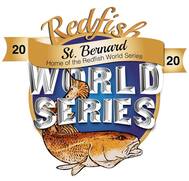
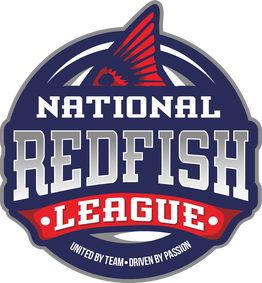
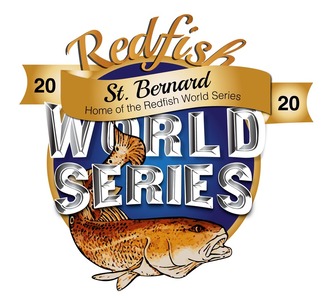
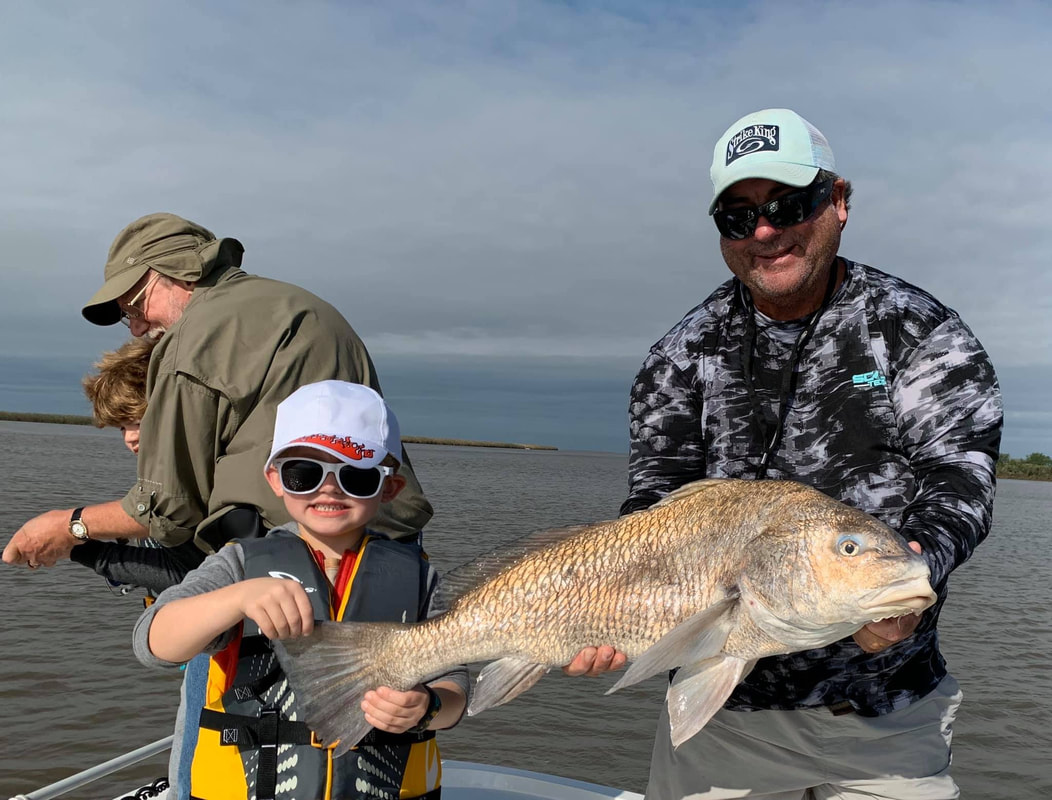
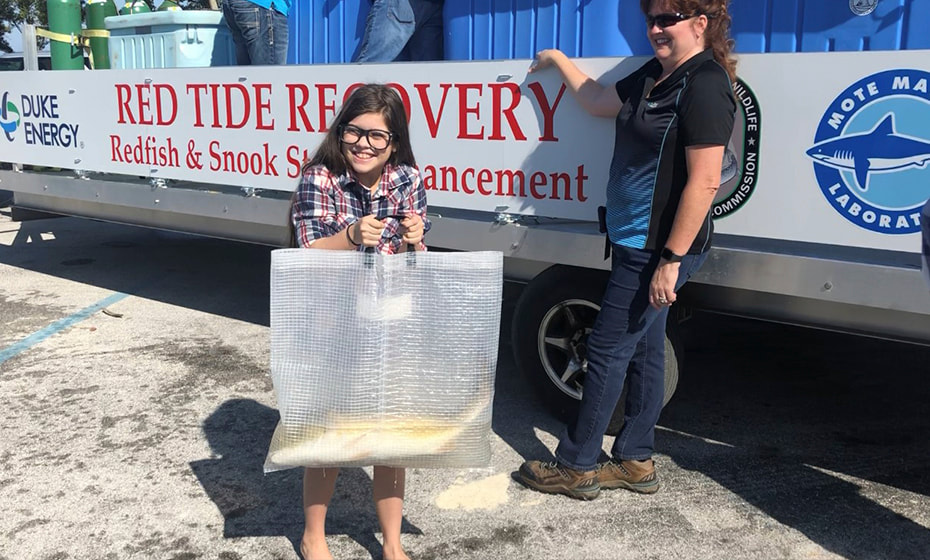
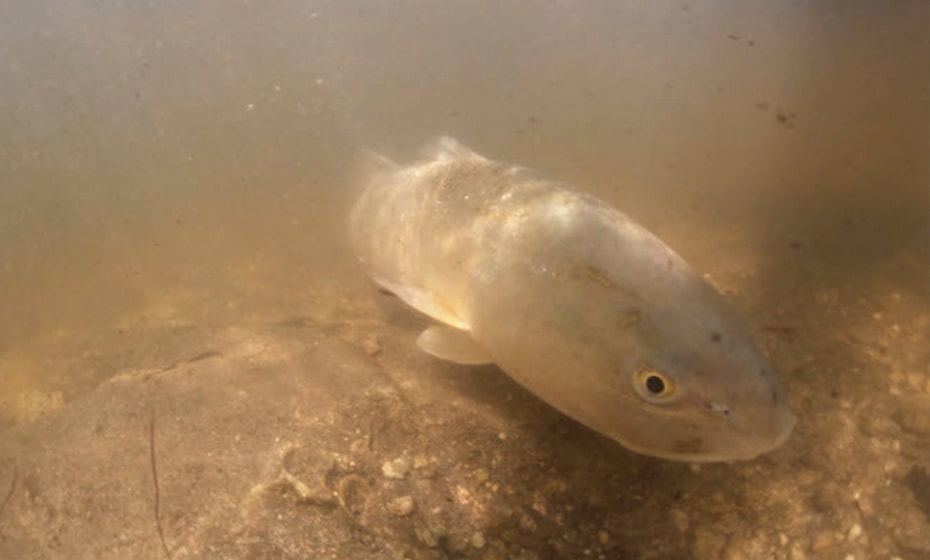
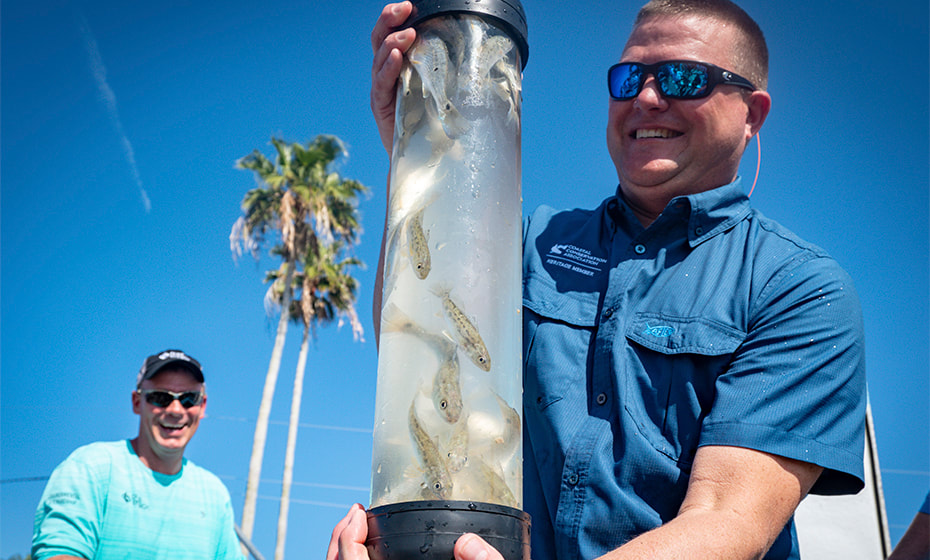
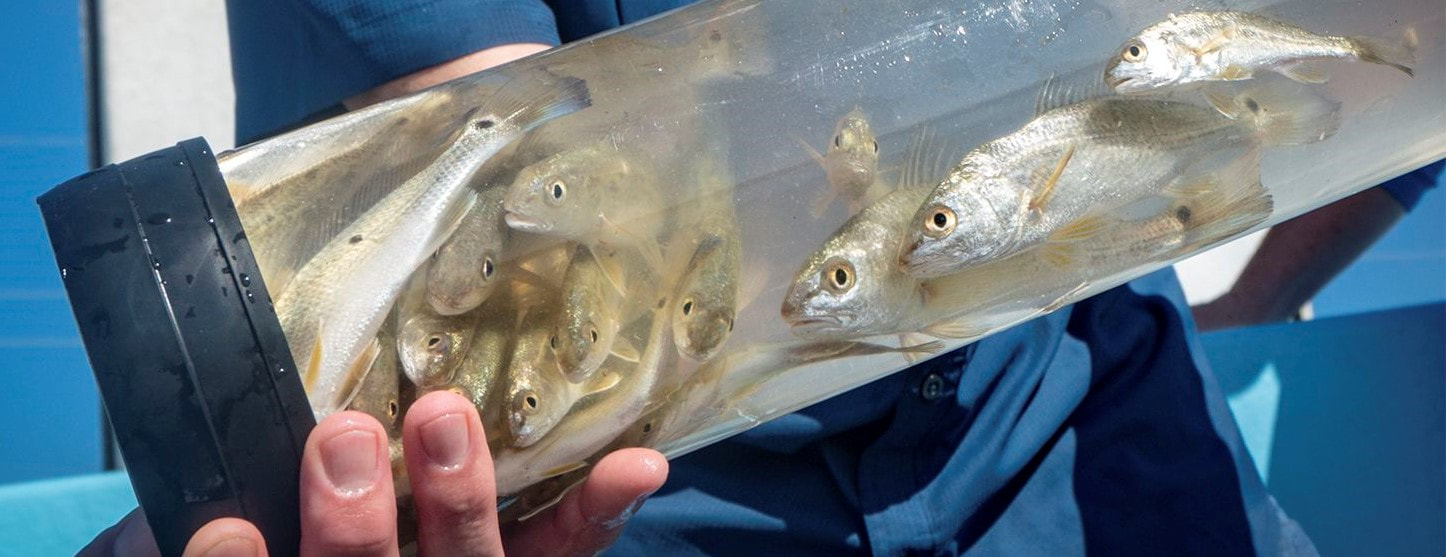
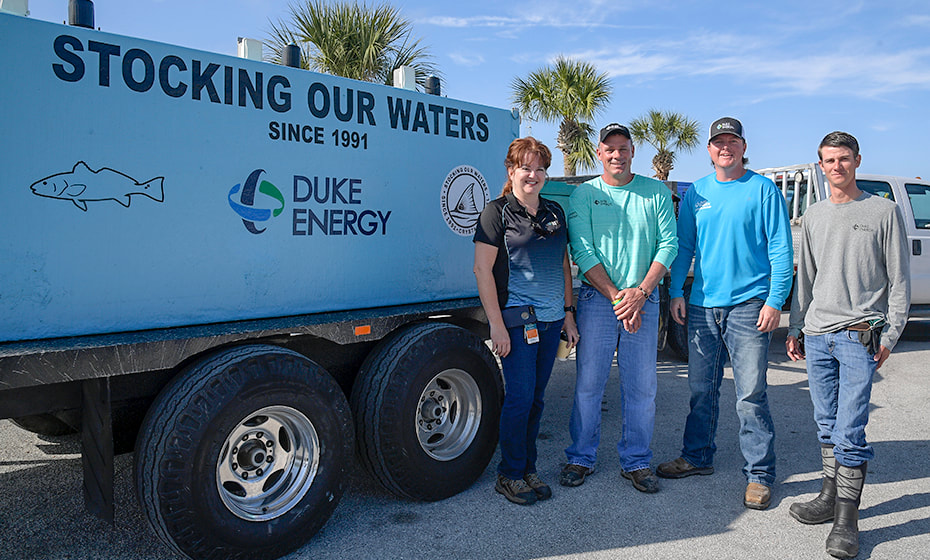
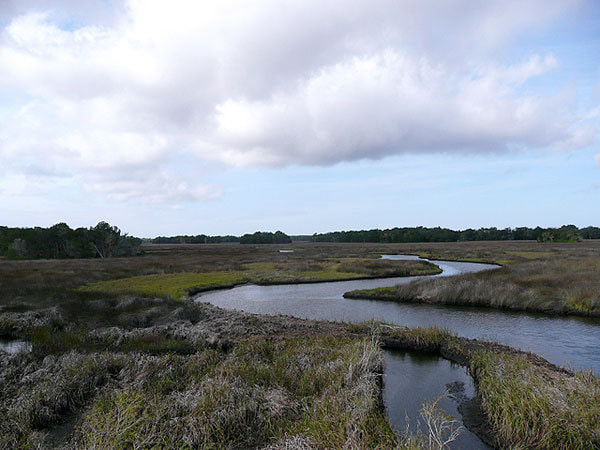
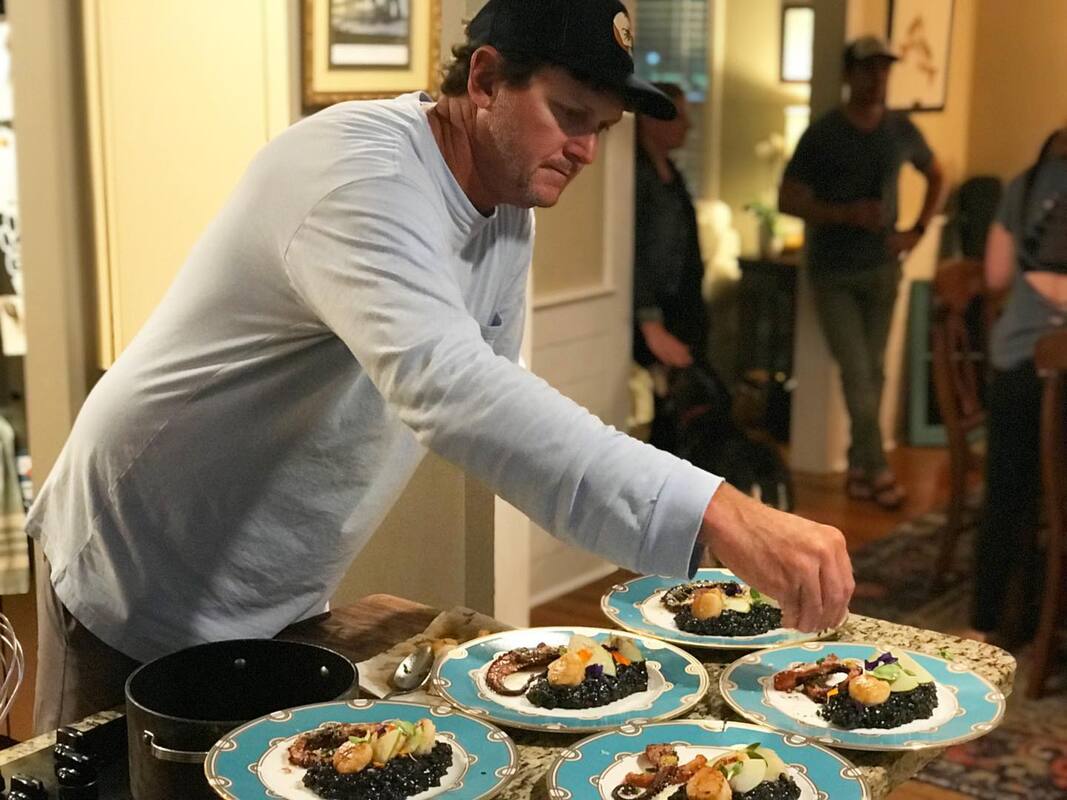
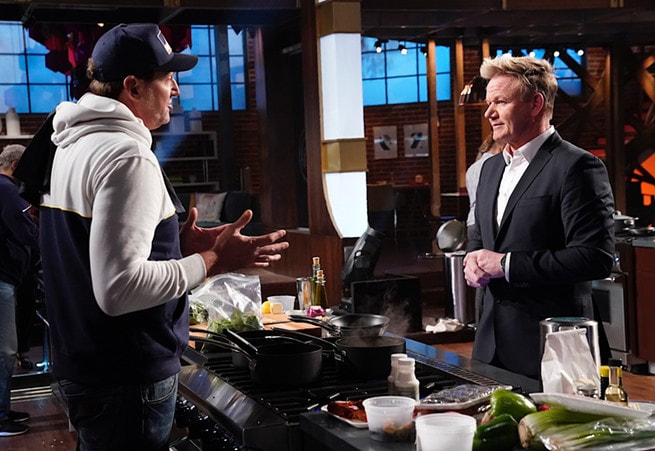
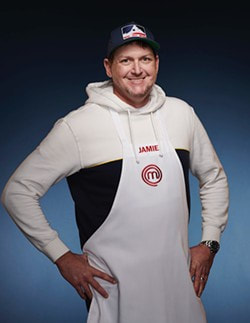
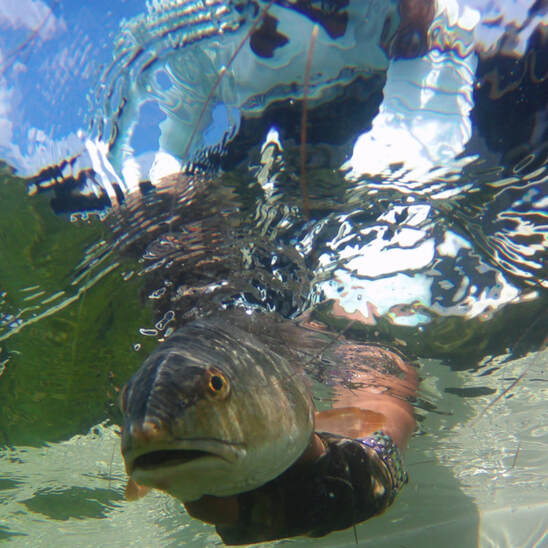

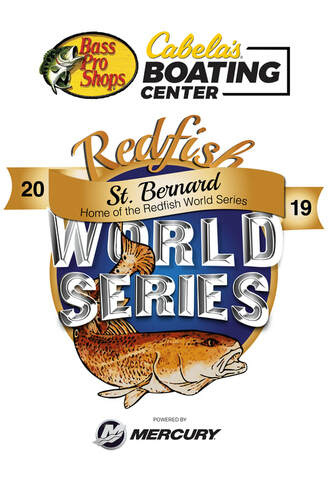
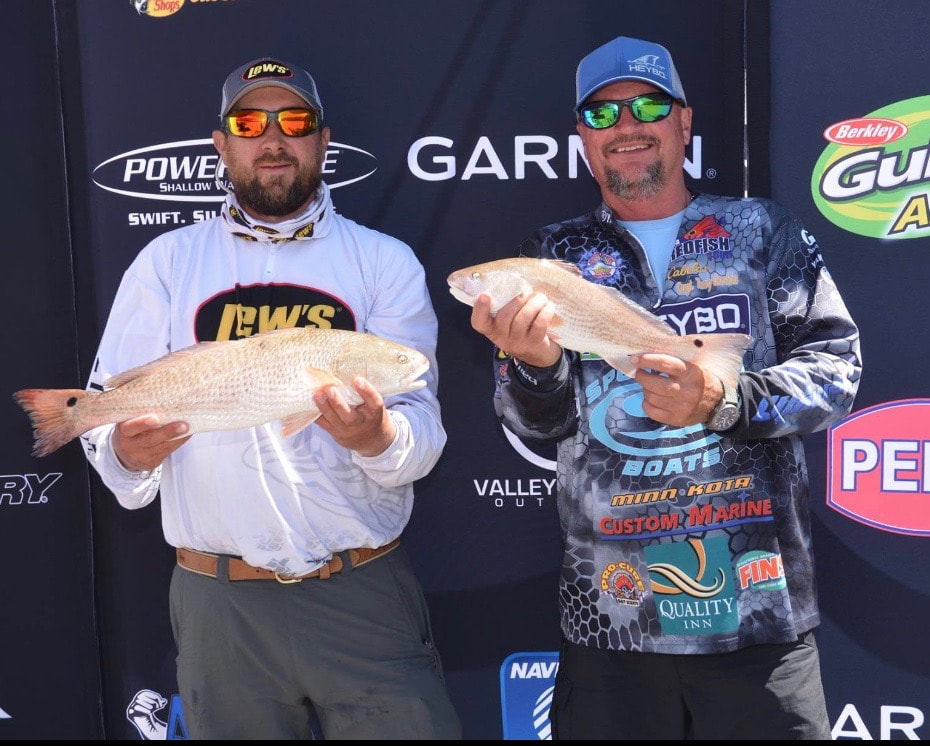

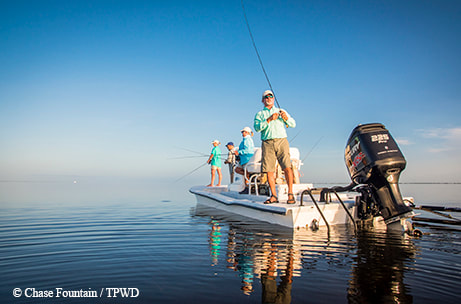

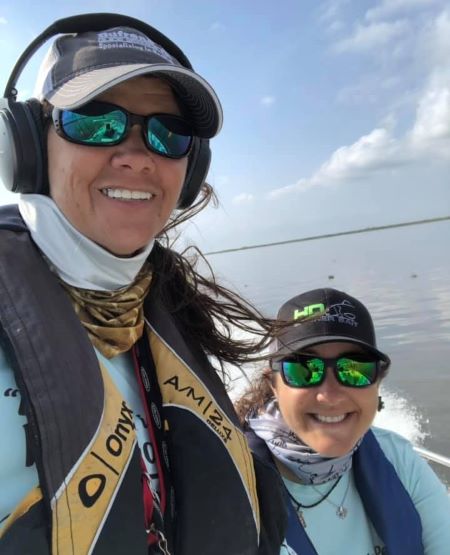
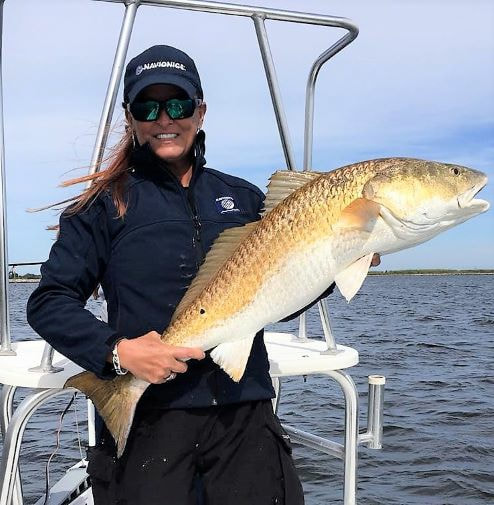
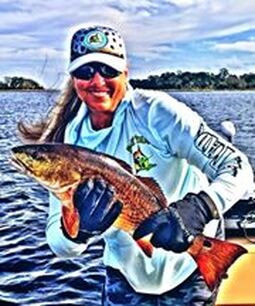
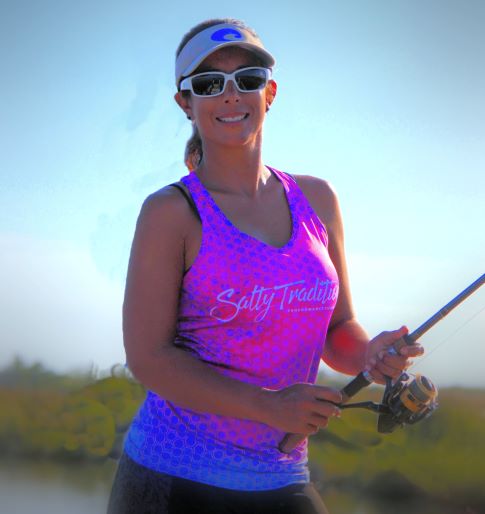


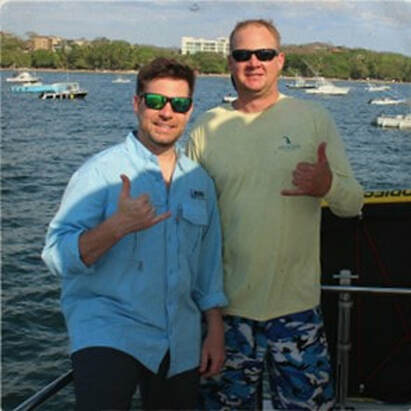

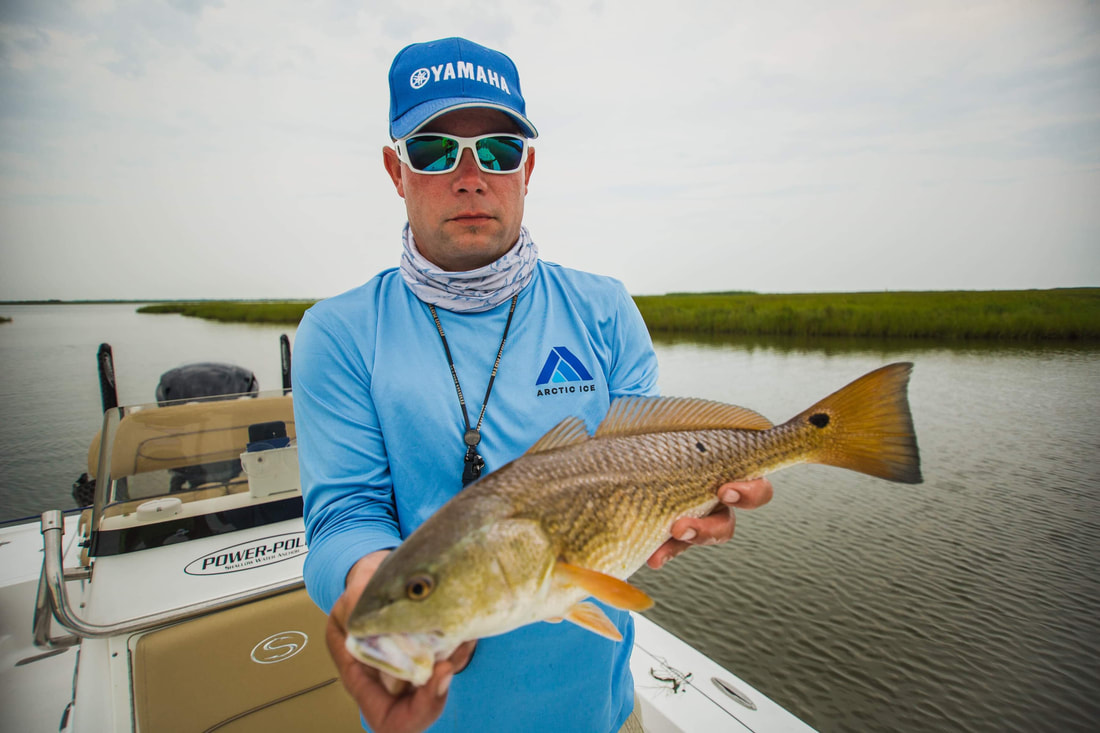
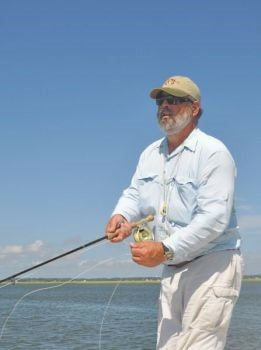
 RSS Feed
RSS Feed
